Huangshan Tibetan Macaque seen in "Monkey Valley" at the base of Huangshan or "Yellow Mountain"
Click Here For More Images From Our Pbase Galleries!
Anhui, China!
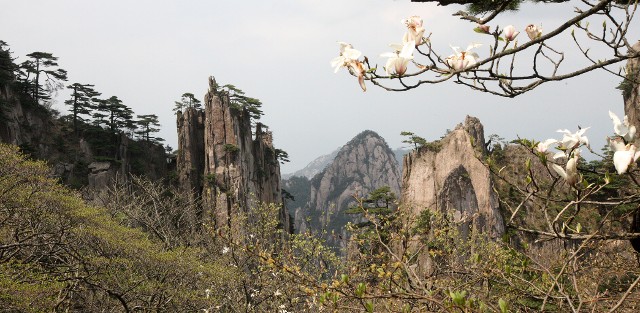
HuangShan National Park
After living in China now for two years, I am almost ashamed to say we’ve only just discovered Anhui. Only a few short hours away by car, Anhui is home so some of China’s most impressive and spectacular destinations. From Yellow Mountain (HuangShan) to the ancient Anhui-style villages to the spectacular forests and geologically amazing landscapes in the south, Anhui is no doubt going to be one of our top quick get-away destinations in the years to come.
After watching the BBC series,“Wild China”, I designed a nature-based expedition to Anhui to see such things as the Huang Chan Macaque, the Black Muntjac, the Chinese Alligator and the Yangtze Finless Porpoise. With our four-day May Day holiday break on the horizon, I decided that this would be the perfect block of time to check out the sites and search for the various species of interest. Well, about two weeks prior to starting our trip, I came across a You Tube on a German couple’s trip to Yellow Mountain during a peak holiday weekend. To make a long story short, they encountered miserably long lines for the cable cars, followed by one solid line of humanity for the entire trail system of Yellow Mountain. And this consisted of many kilometers of trails – all jam-packed with tourists in high heels, umbrellas and cigarettes!
Needless to say, after seeing this video, my enthusiasm for our holiday weekend expedition was tempered a bit. In fact, I came to actually dread the thought of trying to go up Yellow Mountain at all! As luck would have it, however, the Saturday of our adventure was actually NOT a holiday at all. In China they have an interesting way of dolling out holidays. They will designate a holiday, such as May Day, and give their employees two days off. But to make up for these days, the workers need to work Saturday and Sunday! Not sure why they still call this a holiday but it sure helped us on our Yellow Mountain ascent. After checking out the HuangShan Tibetan Macaques at “Monkey Valley” on our first morning of the trip, we were able to ascend the mountain encountering no lines whatsoever. Seriously, we did not encounter any crowds at all! The next day however, when we were to descend from the mountain, we could see the torrent of unending humanity trying to get up the mountain. I would easily estimate the numbers in the high tens of thousands or more!
Qingliang Peak Nature Reserve
Backing up a bit, our adventure started after school with Jon Nordmeyer, Tom Burgess, two of my colleagues from work, and of course the Smith clan. Tom and Jon tagged along on our drive through Zhejiang Province to start an epic bike trip through Maoxiaoxiang and Qingliang Nature Reserve in Zhejiang Province. We all decided to stay at the Hiker’s Inn, located at the entrance of the reserve. We enjoyed some good laughs and local food and spent the evening in a strangely hip and funky lodge located literally in the middle of nowhere. The small inn was something you would expect to find along a popular backpackers route in a famous part of South America or Europe– not in very local, rural China. Still it was really cool.
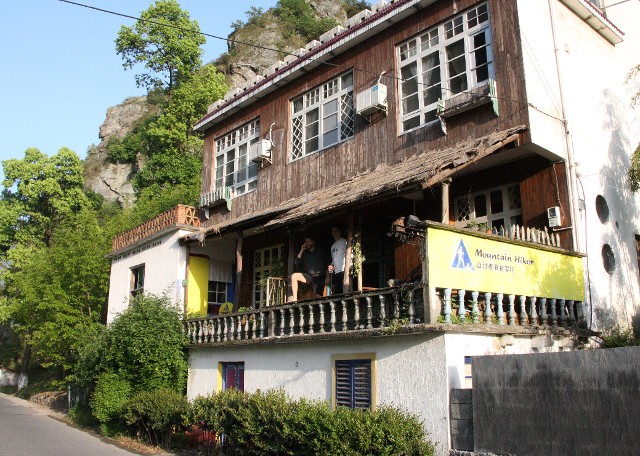
Mountain Hiker Inn located at the mouth of Qingliang Peak Nature Reserve in Zhejiang

Qingliang Peak Nature Reserve, Zhejiang is where hikers pick up the famous Hui-Hang Tea Trail...
After saying “bye bye” to Jon and Tom, we ventured further south to the “southern entrance” of the Huang Shan Mountain National Park. The area is vast and confusing, but luckily we had our master driver, Jordan and his wife there to make the entire trip seamless and spectacular. Jordan is from Anhui and he speaks very good English, so we never met an obstacle during the trip that cost any effort whatsoever. Thanks Jordan!
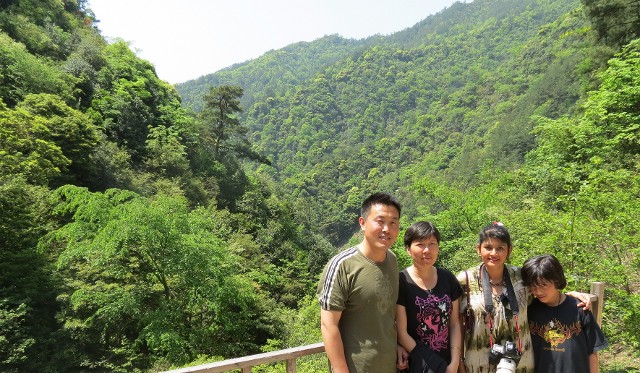
Our Anhui team! Jordan, his lovely wife, of course my lovely wife and our little macaque, Cokie...
"Monkey Valley"
Before ascending the mountain, our goal was to find the small village of Fuxi and see the local semi-wild group of HuangShan Tibetan Macaques that have made their home in what is now known as “Monkey Valley”. The Macaques basically now stay in one place because they are fed, but they are still considered to be wild. Fuxi is a few km outside of the main town at the southern entrance to HuangShan, and the feeding times are generally around 10AM, 1:30PM and 4:30PM. (See their website here). We actually enjoyed the non-feeding time more. Prior to the feeding, and immediately after, the monkeys are back in the forest and feeding on the local vegetation and the photo-ops are far more natural and beautiful.
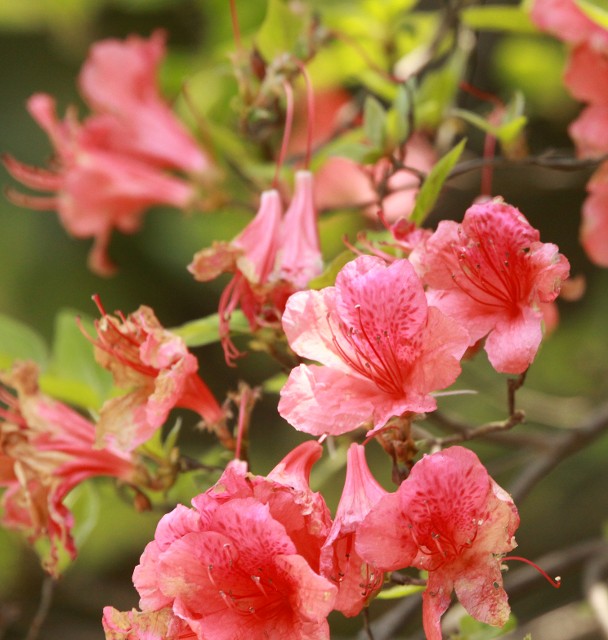
The mountains were on fire with color this weekend. Loads of rhodies like this one, Rhododendron maculiferum seen in Monkey Valley and photographed by Som.
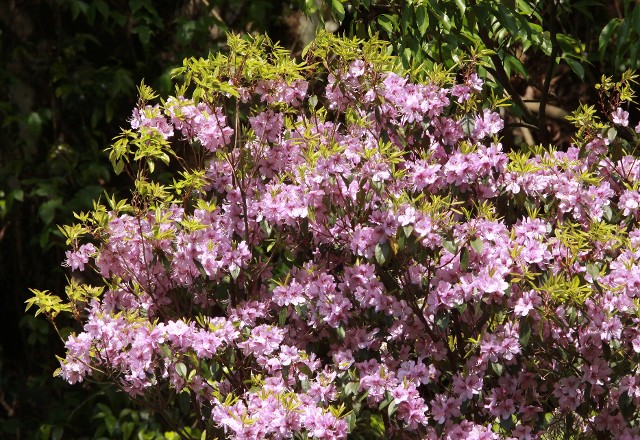
China is home to literally hundreds of species of rhodies but this one I am pretty sure is Rhododendron anhuiense.
HuangShan Tibetan Macaques! (Macaca thibetana huangshanensis)
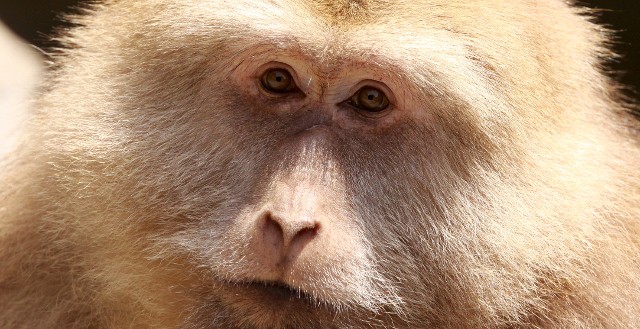
One of the three recognized subspecies, the HuangShan Tibetan Macaque (Macaca thibetana huangshanensis) is found only on Yellow Mountain in Anhui Province. Monkey Valley is the best place to get a good look at this rare subspecies.
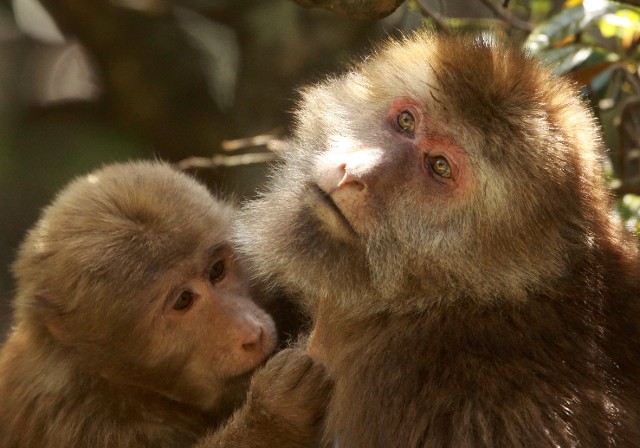
Monkey Valley is home to a small troop of about 15 to 20 Tibetan Macaques.
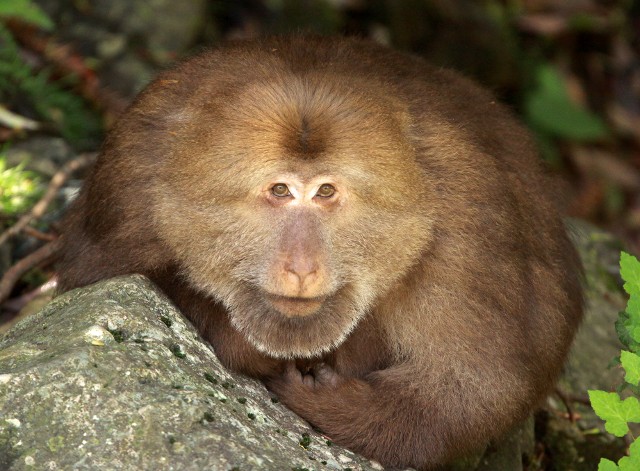
The HuangShan Tibetan Macaque (Macaca thibetana huangshanensis) is very unique in appearance when compared to other macaques species. The face is larger and even the females look like they have beards!
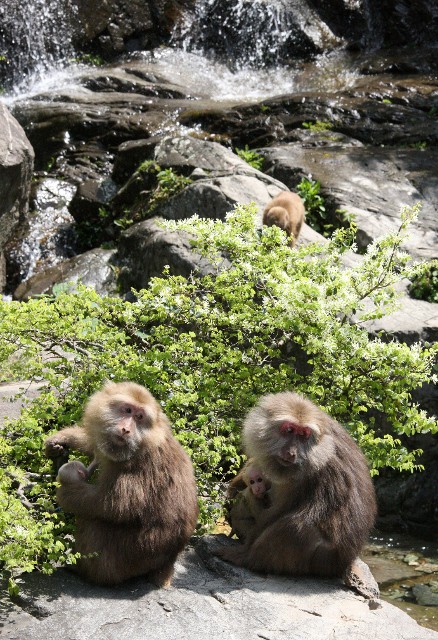
There were several little macaques there this afternoon...
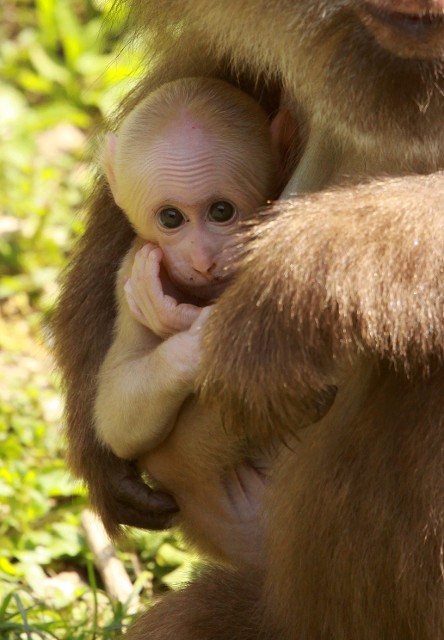
Little "Lightbulb Head"...
Here is a very interesting article on the impacts of ecotourism on this species. (Click for link)
HuangShan National Park

The yellow granite batholiths of HuangShan. There is no doubt that HuangShan ranks as one of the more spectacular places on earth.
After a nice morning with the monkeys and a great bowl of local noodles, we decided to head up the mountain. Initially it was my plan to wait until the last cable car to head up, in an attempt to avoid the crowds, but after hearing the news that this day was not actually a holiday, and seeing the utter lack of crowds on the ground, and anticipating a looming thunderstorm that threatened to dampen everything, we all voted to head up right away. And what a correct decision that was! Not only did we encounter zero crowds, the views from the trails of HuangShan were simply indescribable. While we never really got the fog-dripped, surreal sights that inspired the likes of the “Floating Mountains of Pandora” from Avatar fame, we did get several hours of high quality vistas from one of China’s most spectacular national parks.

Ice, time and erosion have all worked hard to carve HuangShan in to myriad forms and shapes. The geology is nothing short of spectacular!
HuangShan is simply amazing. There have been many natural sights in my life that are indelibly marked in my memory, and now HuangShan ranks up with the likes of the Grand Canyon, Soususvlei, Svalbard, Kamchatka and other amazingly beautiful natural sights I've been fortunate to visit. The vegetation on the mountain appears to be mainly native and in relatively good condition. A museum at the bottom the Yongje cable car station explains about the fuana, vegetation and the fascinating geology of the region and is definitely worth a few minutes of your time if you are in the area.

This spring afternoon treated us to spectacular views and great flora and fauna, even with the crowds! The flora of HuangShan is rich. Most of the pines in the images here are Pinus hwangshanensis or Pseudotsuga gausenii. China and the USA are the only places on earth you can see Pseudotsuga species interestingly.
The fauna on the mountain is interesting as well, and we actually did encounter a few interesting species in spite of the holiday crowds. We were continually greeted by the omnipresent Perny’s Long-nosed Squirrels, many of which were habituated due to continuous feeding by the tourists. We also came across some great birds such as the similarly habituated Rusty Laughingthrushes and Chinese Bamboo Partridges as well as Eastern Crowned Warblers and Slaty Buntings, all of witch were good lifers for me and allowed some respectable images to be taken of them!

It was great to see a squirrel species that wasn't Pallas's! Perny's Long-nosed Squirrels were literally everywhere along the trails of HuangShan.
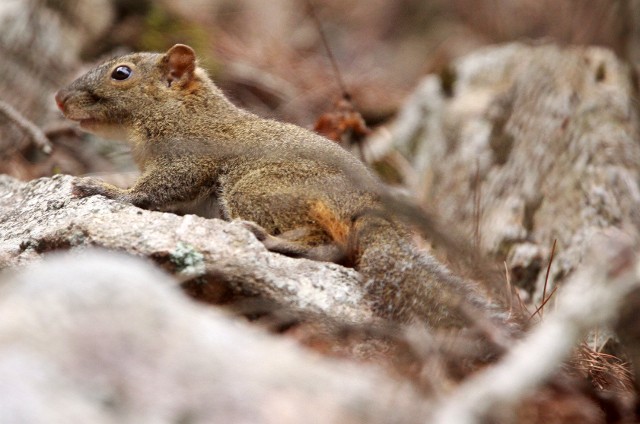
The surprise of the morning came when we spotted this lone Red-hipped Squirrel! There is a possibility that it is a hybrid of sorts too but it is definitely something new. I was very happy to come across this unique little dude!
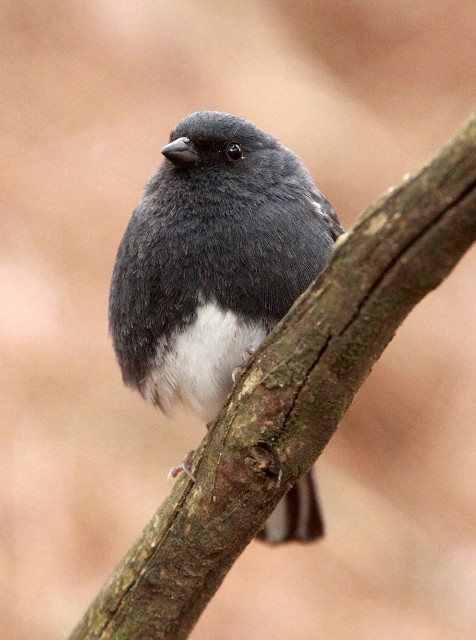
We nailed some nice birds on the mountain as well. This Slaty Bunting stuck around long enough for some nice images.

The Rusty Laughingthrushes of HuangShan are legendary. Most are habituated by feeding-tourists and are easily seen and photographed. HuangShan is the best place to see this elusive endemic!
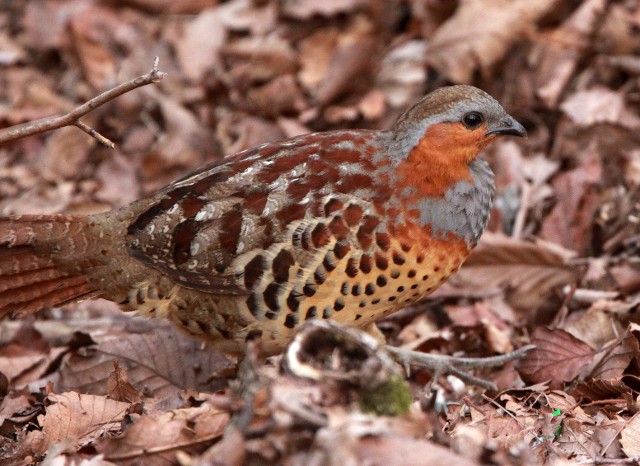
Another great endemic seen on the mountain was this Chinese Bamboo Partridge. He was poking around the forest floor right next to our busy hotel, completely oblivious to the crowds.
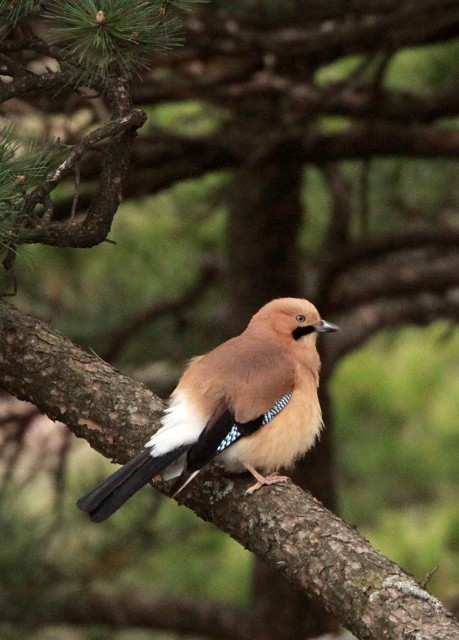
Nice look at this Eurasian Jay, thanks to Som's eagle eyes!
We enjoyed hiking many, many kilometers on the mountain during our short but quality stay there. One of the most memorable experiences for me however, was during my only night hike. Som and Cokie opted to rest in our hotel (Shilin Hotel – actually not bad at all – a very respectable, albeit very overpriced, inn on the mountain…). I took my spotlight and hiked a few more km up to Cooling Peak. I was the only soul on the mountain that night, and although I did not encounter any nocturnal species, I did get to feel the immense solitude and stark quiet of the mountain. The sounds of the forest caused by the strong, cool breeze with fresh air were good for the soul. Even though the hotel area was buzzing with humanity, just a few minutes walk up the hill, I could find complete aloneness. I spent at least and hour meditating and experience the grandeur of HuangShan.
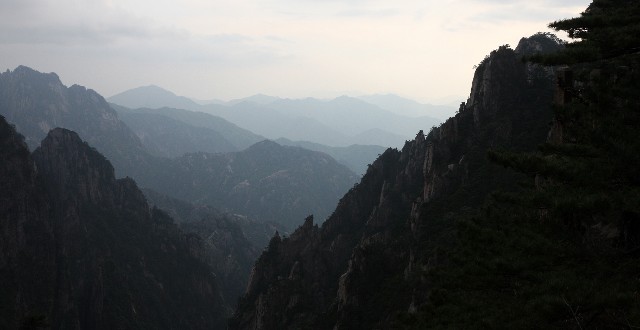
Around every corner there were unbelievable views...
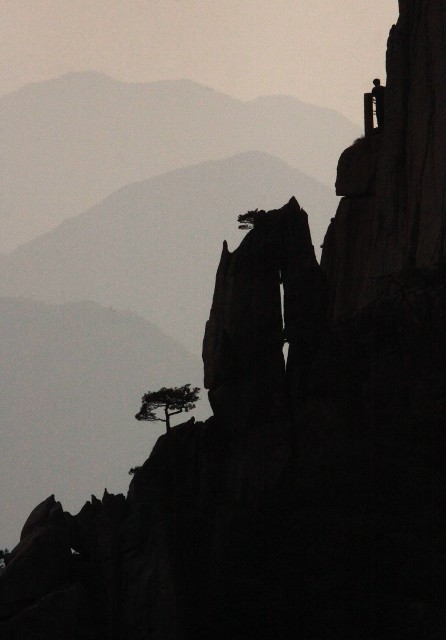
Sublime beauty...
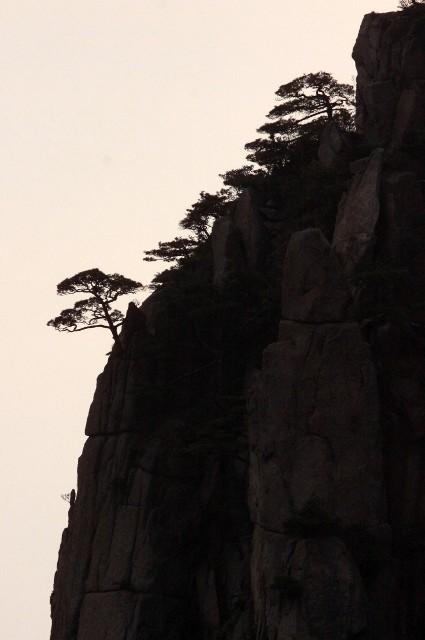
The trees of HuangShan are ancient and are one of the mountain's claims to fame.
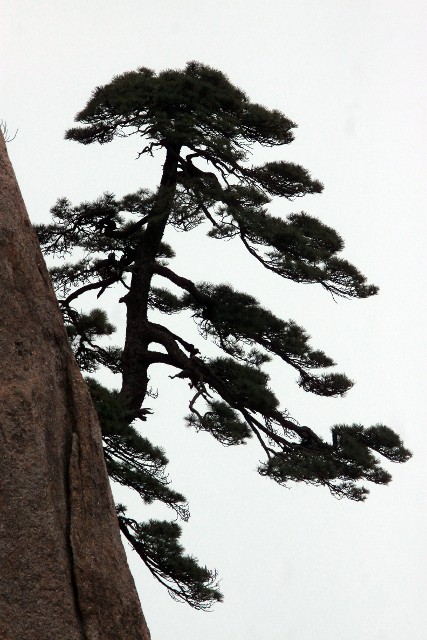
Pinus hwangshanensis
The rain started hard that night. The weather reports were not wrong after all…just a little late. The next morning, the rain let up a bit and that allowed for us to start our descent from the mountain but this time in dense impenetrable fog. We were amazed by the change in numbers on the mountain. The quality viewings and moderate crowds of the day before, were replaced by zero visibility and massive hordes of humanity, with screaming tourists, mega-phone-equipped tour guides doing everything possible to ruin everyone’s “nature” experience. While “no smoking” signs were everywhere, the men were smoking like coal factories, and tossing their butts in to the fragile forest ecosystem. Although litter bins were everywhere as well, the tourists seemed to go out of their way to make sure they tossed everything possible right on to the ground and in to the forest. I am so happy that our main day on the mountain was NOT this day! Our memories of Huang Shan are fond and our desire to return is high! Just not on a major tourist holiday…
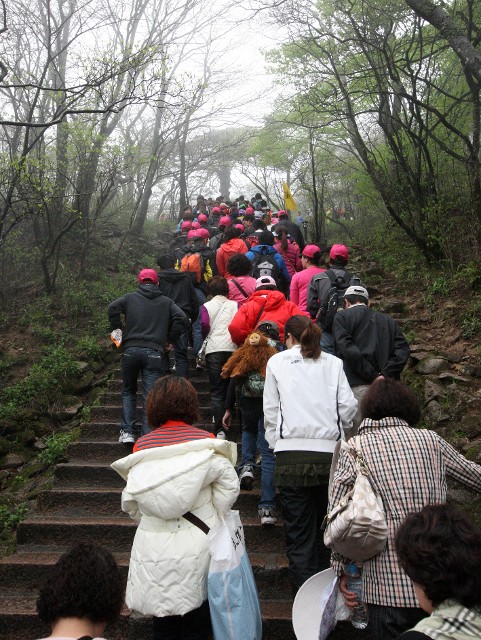
Thank goodness they were headed the other direction! Our first day on the mountain was an official workday so we avoided the crowds. But this day was simply insane...Luckily we were on our way down!
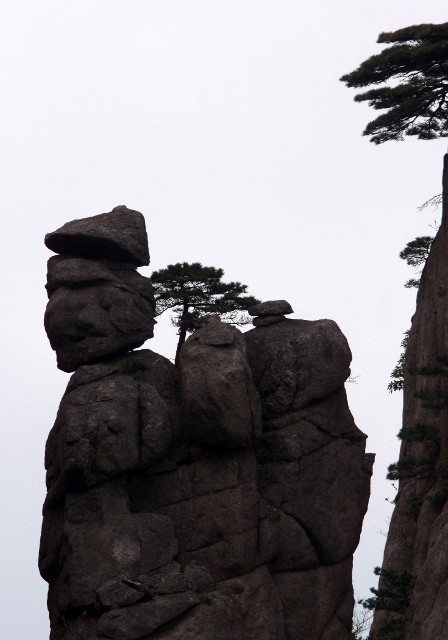
Old Man of the Mountain!
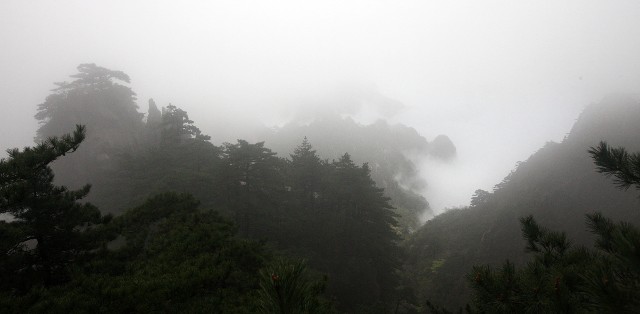
While we were deprived the amazing fog-filled or low cloud views for which HuangShan is famous for, we at least had a couple hints of what it would look like on the way down the mountain. But we will return!

Descending the mountain in the cable car in to the foggy abyss...surreal!
Hongcun Village
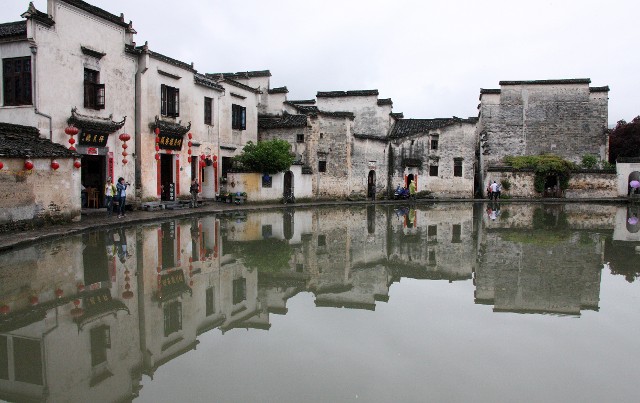
The white homes of Hongcun Village, a classic and ancient Anhui-style village...
Our next destination was Hongcun, one of Anhui’s famous ancient, traditional villages, located not too far from HuangShan. This village as well as Xidi are now protected and are classified as World Heritage Sites. We opted to visit Hongcun for no particular reason, and spent the morning hours strolling the ancient streets and alleyways of this marvelous, white stucco village. While there were definitely crowds galore in Hongcun this morning, they were not hard to escape if you were to venture off to some of the more remote parts of the village. All in all, we enjoyed our time in Hongcun, and the subtle beauty of the Anhui style architecture.
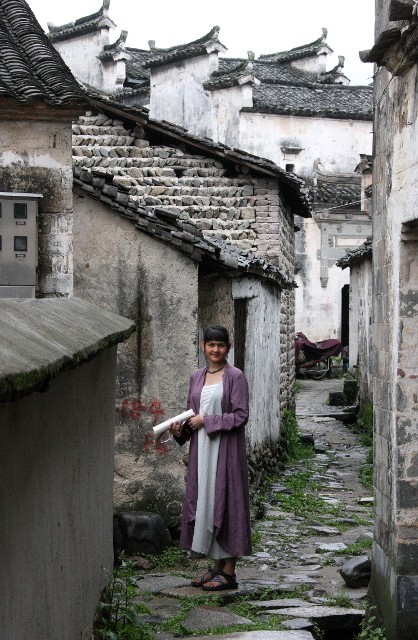
Stunning...
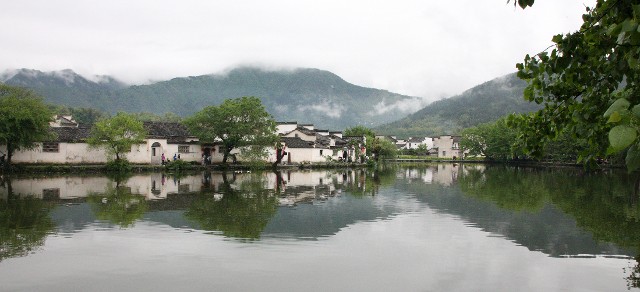
Hongcun Village
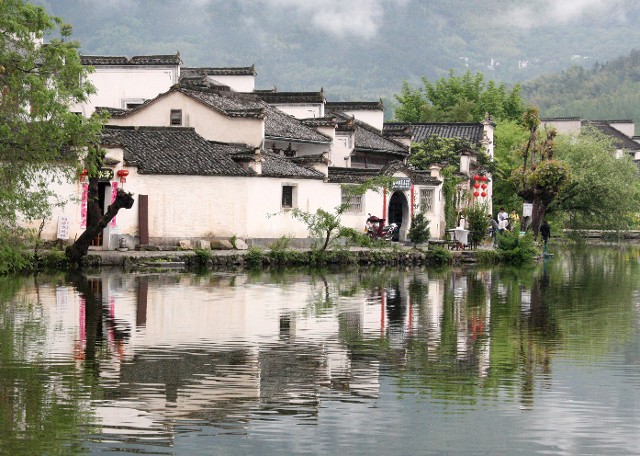
A serious photographer's dream town...
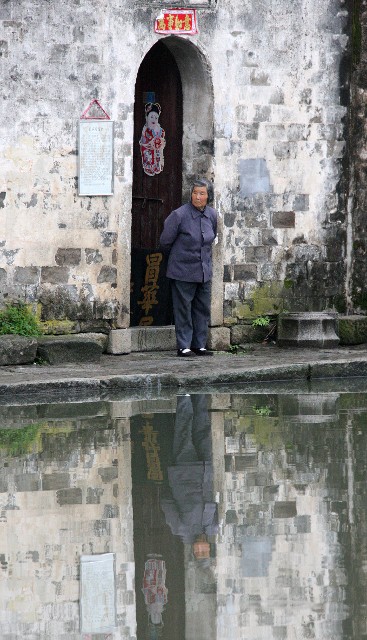
We stole some time away from the crowds and strolled the less visited spots of Hongcun and were rewarded with lovely village scenes. We stopped and had a great lunch of Anhui cuisine and enjoyed a peaceful afternoon in this spectacular village.

Our lunch!
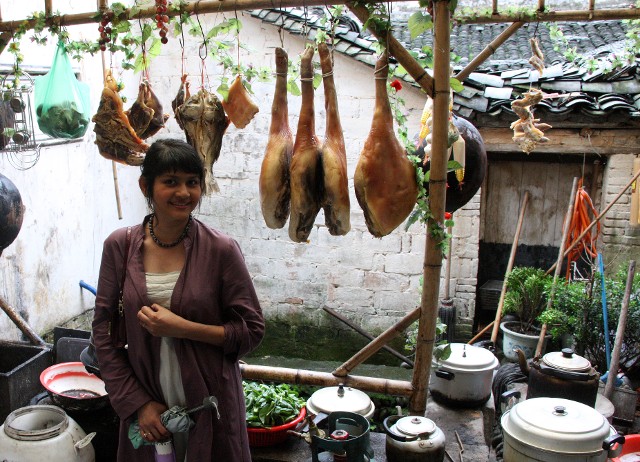
Som's dream kitchen!
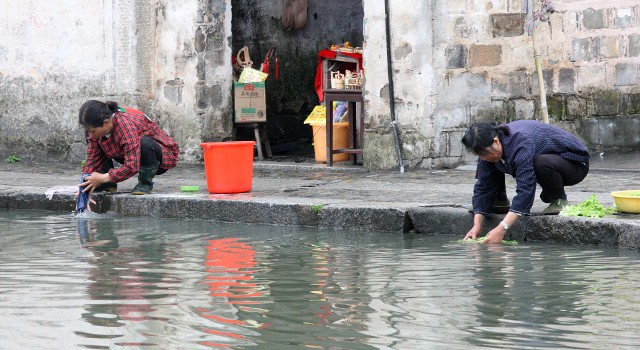
Hmmm....I wonder if those veggies are safe to eat....laundry....veggie wash....sewer....hmmm
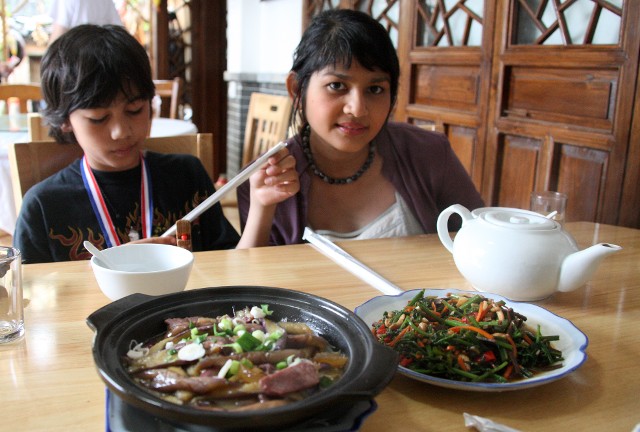
Sure hope these veggies were NOT washed in that public pond! (We survived...)
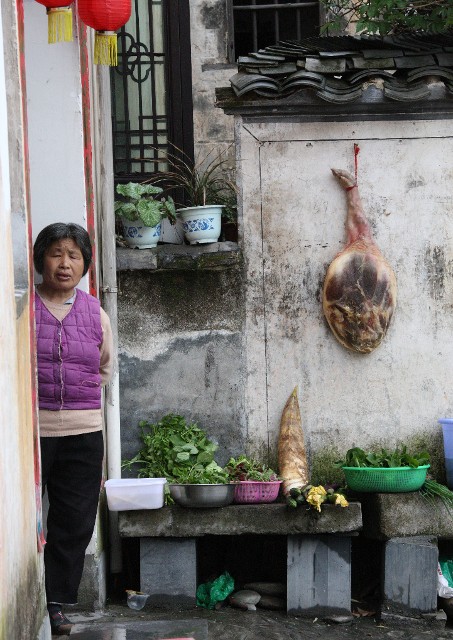
Our lunch veggie selection!
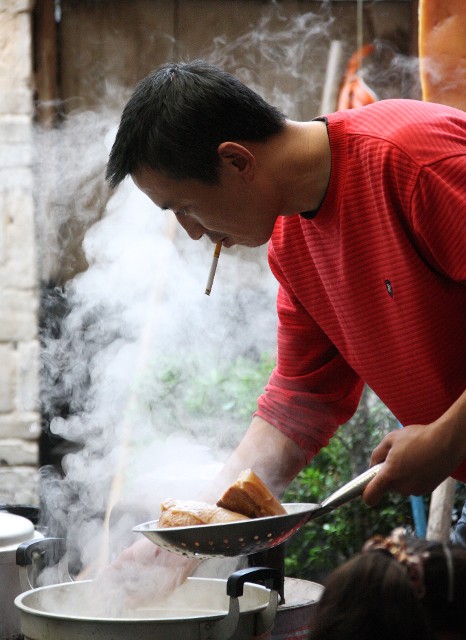
Our chef! Thankfully he was not cooking our food....yes his ashes did fall off in to the food he was cooking....Grrrr!
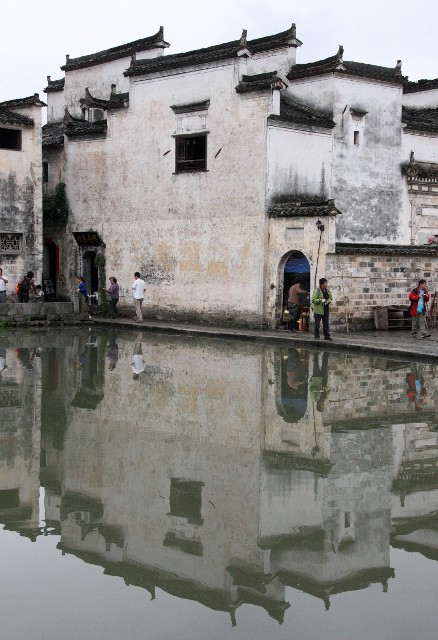
Hongcun Village Anhui
Of course, while nature and wildlife are always the main foci of the Smith family trips, we do enjoy experiencing the culture of the regions we visit. But what is always cool is when the nature and culture come together! While at Hongcun, we got some great looks at a curious Anhui Pallas’s Squirrel scurrying around his nest in an old oak tree. And along side of him were some splendid Long-tailed Tits, feeding each other.
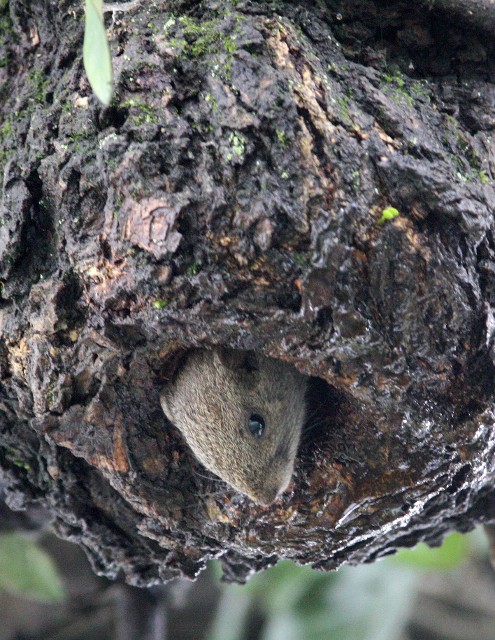
This little Anhui Pallas's Squirrel (Callosciurus erythraeus styani) entertained us for several minutes while strolling the wooded lanes of Hongcun.
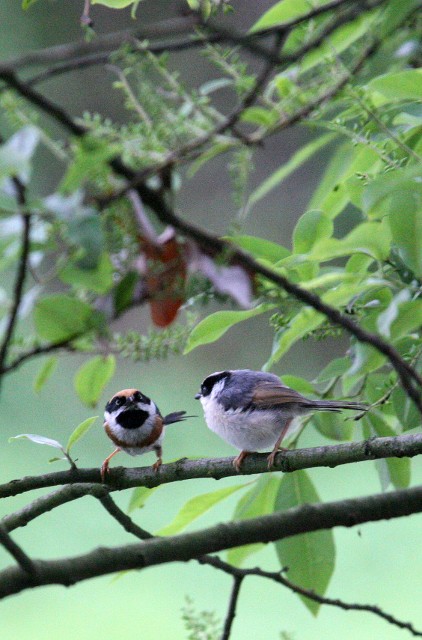
A "papa" Long-tailed Tit feeding his oversized young one!
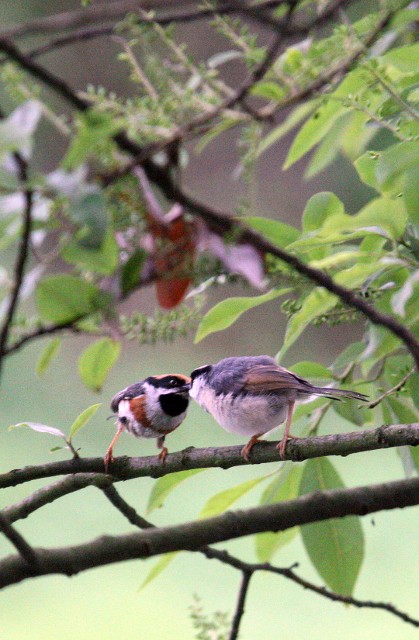
Seriously nice parenting skills!
Guniujiang National Nature Reserve

Guniujiang Lake
After Hongcun, we were off to Guniujiang, a nature reserve that Zhang Lin (See Zhang Lin's Birding Webstie Here) mentioned may be a haunt to the elusive Black Muntjac. Prior to the trip, I could find virtually nothing at all about the reserve, and Jordan had never heard of it either. But with a little local inquiry, we were able to make our way to Guniujiang, which is located in Anhui’s far southern section. Not knowing what to expect, and having no reservations at all, we were absolutely ecstatic to find that there was in fact an inn at the reserve and one room was available! And Guniujiang itself proved to be an absolutely amazing eco-destination. The lodge was tastefully built along a man-made lake, with stunning views of the subtropical forest and impressive Guniujiang Mountain massif. Our room had a great deck with great views of the park.
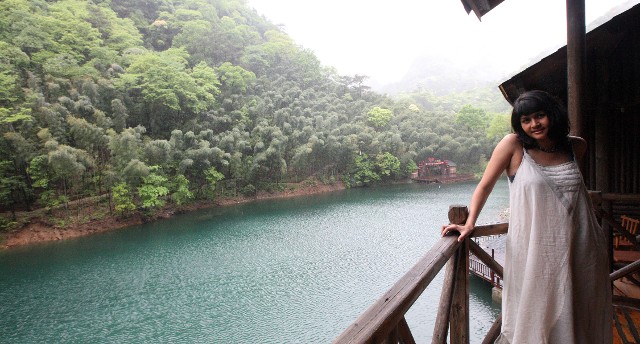
TWO great views! Guniujiang is a seriously nice place to relax and enjoy nature!
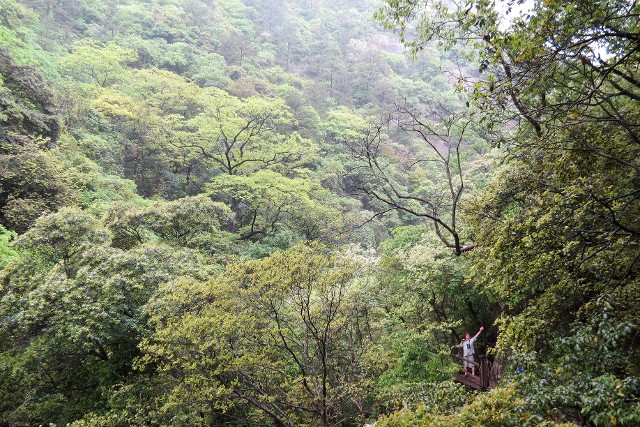
Guniujiang has a very impressive trail network that makes exploring its vast and diverse forest a breeze...Excellent birding destination with an extremely diverse flora and topography.
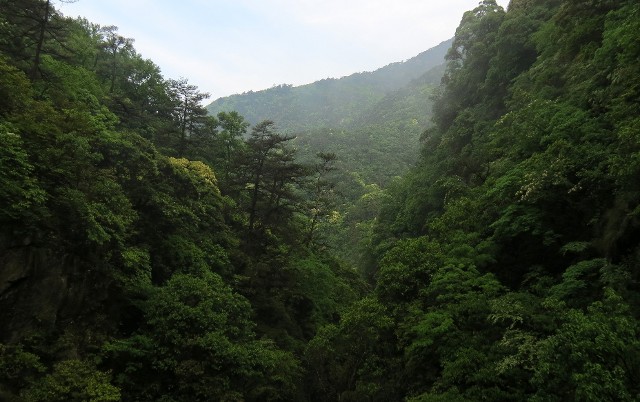
The subtropical hardwood forest of Guniujiang was spectacular!
While our time at Guniujiang was relatively short, we did make the best of it. In all we probably trekked a good 15 km on the impressive trail network of the park. The trail takes you through some great secondary forest and some very impressive riverine ecosystems. While we never did glimpse the rarely seen Black Muntjac, I did get a Maritime Squirrel and a Great Barbet as well as a Grey-chinned Minivet, Crested Kingfisher and Collared Finchbills.
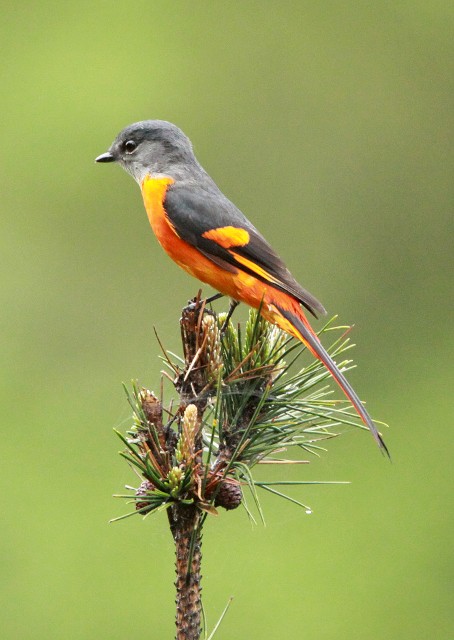
While hiking the higher elevations of Guniujiang, far from the crowds of the lake, I spent some quality time with this very rare Grey-chinned Minivet, a lifer for me! I called him in with some basic "psssssht"ing and he never left my side! I guess he liked my conversation....
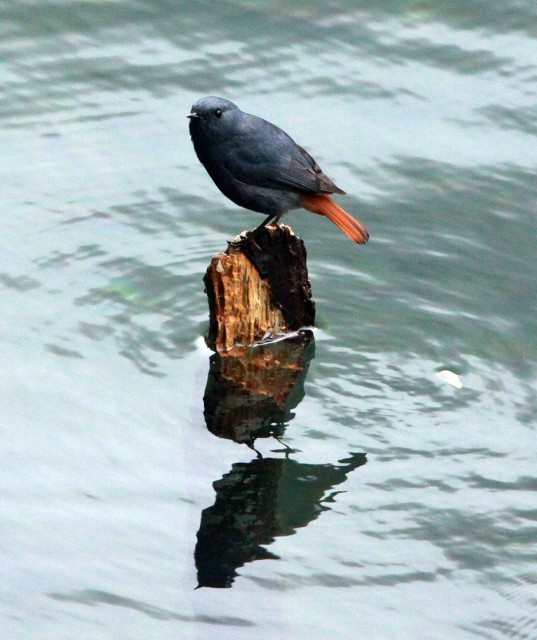
Plumbeous Water Redstarts were everywhere on this trip!
River Dolphin National Nature Reserve (Neophocaena phocaenoides asiaorientalis)

Som's amazing image of a very rare cetacean - the soon-to-be-extinct, Yangtze River Finless Porpoise (Neophocaena phocaenoides asiaorientalis)! Note the fish in its mouth and the tiny teeth gripping it! Nice shot Som!
Adding Guniujiang to our“must-return-to” list, we were now off to Tongling City to attempt to see one of the rarest and endangered cetaceans on the planet, the Yangtze River Finless Porpoise. While there are still completely wild and free individuals eeking out a living in the Yangtze and its tributaries, the only way you could hope to see one is to visit this site on Yuzhou Island near Gatong Town, which is near Tongling. Finding English-language information on the site is virtually impossible, and I am hopeful that this blog fixes that to some degree.
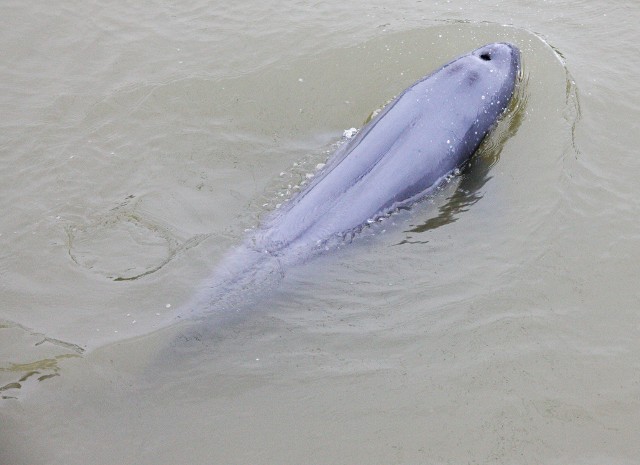
We spent at least two hours in the nature reserve trying to get ever-better views of this insanely rare cetacean. We succeeded!
The Yangtze River Dolphin National Nature Reserve is pretty difficult to find. While the only English-language website is basically a Google Translation-version of a Chinese website, the location info is very difficult to make sense of once you are on the ground. The site did mention Gatong Town. This is easy enough to find with the current signage, but once in town you will need to ask the locals. Basically head to the river front along the main drag in Gatong Town, and find one of the two or three local ferries that take you to Yuzhou Island. From there you will need to follow some very narrow alleyways to the River Dolphin Reserve center, which is where the largest breeding population of the species is known to reside.
Evidently there is no guarantee of seeing the critters, even if you make the effort to get there, but we did manage to see at least seven. While trekking the villages to get to the site, Jordan asked many folks if it was possible to see the porpoises, and the unanimous answer was “mei yo” (no)! I was a bit discouraged by all the negativity, but I knew that “if they were there, we would see them”, which as become the Smith family motto over the years. Upon arrival, we did find the entire place closed up tight, but thanks to some of the smooth talking from Jordan, the guard let us in to try to see this insanely endangered critter.
Well, after about an entire TWO MINUTES, we caught our first glimpse of the Yangtze River Finless Porpoise! We watched about seven of them swim up and down the riverway for the better part of an hour, as we were trying to capture images for the blog. Then we caught word that someone as on the way to feed them, which seems to be a daily event. In fact the back and forth passing by the porpoises was no doubt in anticipation to the daily feeding. A local person there told me that the feeding generally happens daily from 2:30 to 4:00 PM. Today it was 2:30 on the nose! Finally we got some decent images!
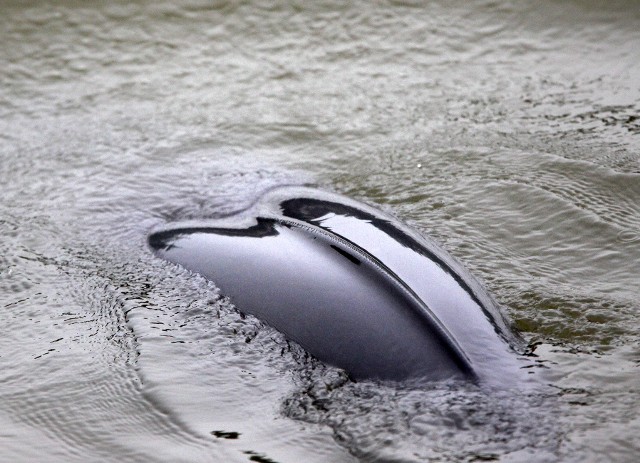
Hense the name, "finless" porpoise...
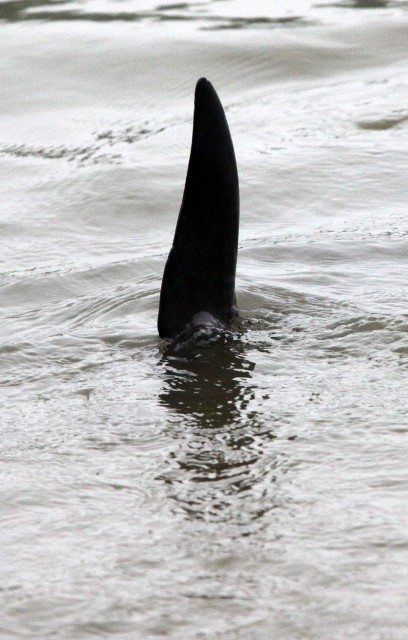
"Finless", not "flipperless"...
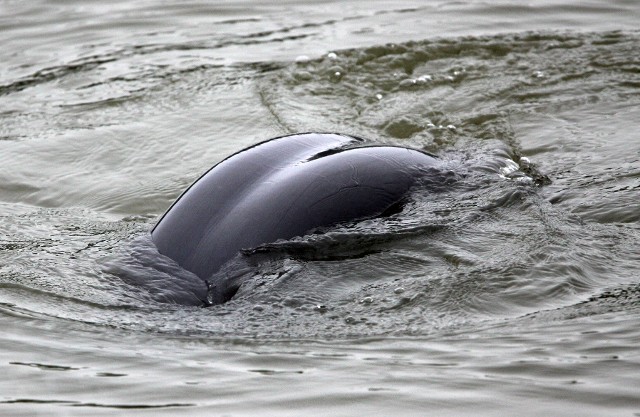 Neophocaena phocaenoides asiaorientalis is the rarest of all the subspecies of Finless Porpoises and is nearing extinction. Here is an article of some of the recent and unexplained deaths of this species...very sad. (Click here for link)
Neophocaena phocaenoides asiaorientalis is the rarest of all the subspecies of Finless Porpoises and is nearing extinction. Here is an article of some of the recent and unexplained deaths of this species...very sad. (Click here for link)
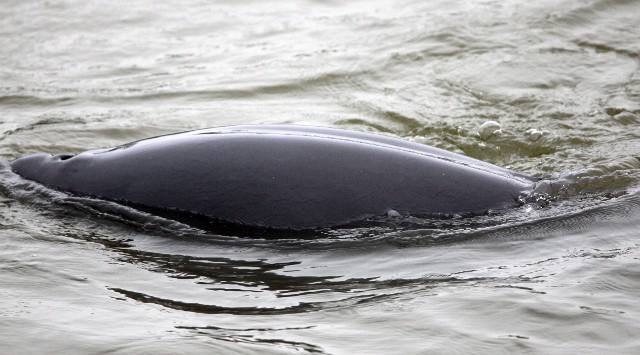
Yangtze River Finless Porpoise (Neophocaena phocaenoides asiaorientalis)
Once we got in to the visitor’s center we were able to get an idea of what we were looking at. The government long ago started to realize the species was under serious threat of extinction. So what they did was corral a small wild breeding population from the Yangtze and herd them in to this small ox-bow and seal them in. Now they are protected and able to breed in an effort to eventually repopulate the wild population, when conditions allow…While of course it would have been nice to see a live Yangtze River Dolphin, none of that species has been seen in decades, sadly. We did get a look at a rare skeleton in the museum.
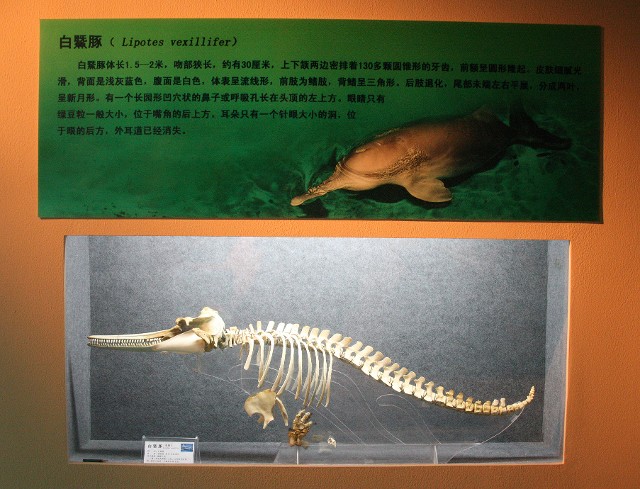
One of the only skeletons left of this now-extinct river dolphin. The Yangtze River Dolphin has not been seen since the 1990's and after an exhaustive international effort to locate remaining members of this species, they were declared extinct in 2006. Very sad indeed. And now with no let-up in pollution and with the completion of the Three Gorges Dam, the future of the Yangtze River Finless Porpoise is just as bleak.
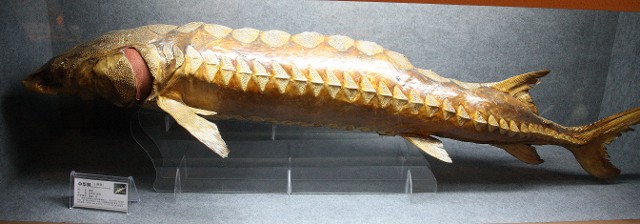
There does seem to be some of these Yangtze sturgeons remaining the wild. This was a small one at about 1.5 meters!
I would absolutely recommend this experience. Not only was seeing the porpoises very exciting and educational, the local village experience was amazing. It’s not often in our part of China these days were we foreigners get much more than a stare, but here we were mobbed! In a good way. Everywhere we went, the local folks were incredibly curious and inquisitive. We were quite the spectacle. It was nice, though, and after our four amazing days in Anhui, Som and I commented how friendly and sincere the Anhui people seemed. It was refreshing to experience such truly friendly and fun people.
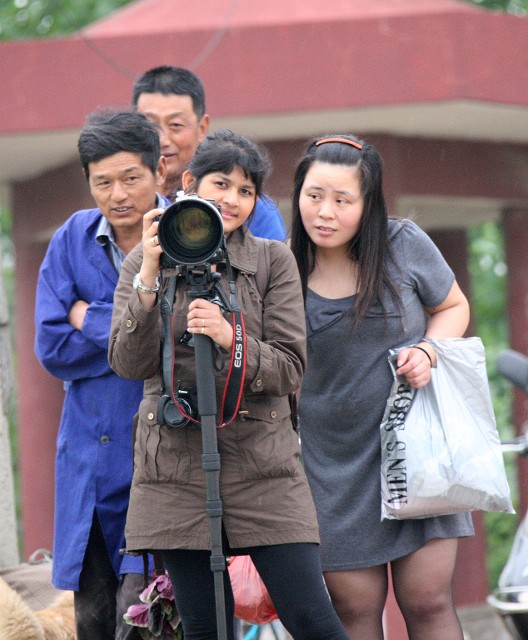
Som had absolutely no idea she had some new friends peeking over her shoulders to get a view of what she was photographing. She was startled when she found out!
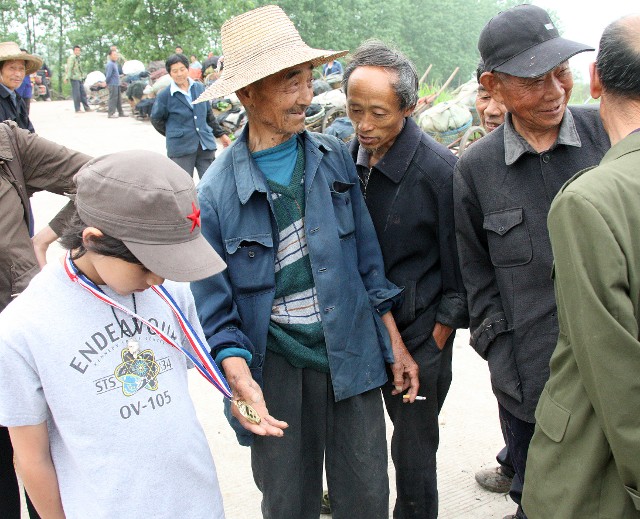
Cokie's souvineer HuangShan medalion caused quite a ruckus with the local folks who were debating whether it was real gold or not. I think I settled the debate when I told them we paid a whopping 10 RMB for it...

While waiting for the Yuzhou Island ferry, we made some new friends and had some good laughs with the local farmers who were on their way to Gatong Town Market, across the Yangtze tributary...

On the way to Gatong Market...
Chinese Alligator Breeding Center
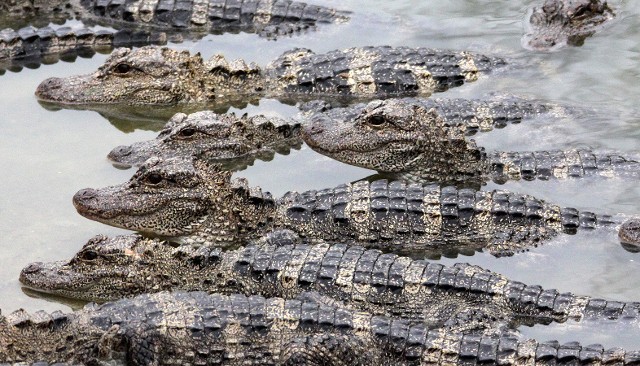
Alligator sinensis is one of two Alligator species in the world that still remains. While its cousin, the North American Alligator, is increasing in numbers, the Chinese Alligator is on the verge of extinction with less than 200 remaining in the wild. The Xuancheng Chinese Alligator Breeding Center has at least 10,000 of them in pens and several in semi-wild conditions with the hopes of eventually finding suitable habitat to re-introduce more sustainable populations.
With our penultimate species nailed, we opted to go straight to Xuancheng City to see Chinese Alligators. While I was not expecting anything really “natural” in this experience, I was looking forward to getting some good looks at the rarest of all crocodilians on earth. The Chinese Alligator (“Hungry Fish” as it is known in China) Breeding Center in Xuancheng is home to approximately 10,000 of these amazing little alligators. With only the Northern American and Chinese Alligator species still extant, it is more important than ever to preserve this species. There may be as many as 200 or so in the truly wild, and this is the only place you can realistically get a good look at the species.
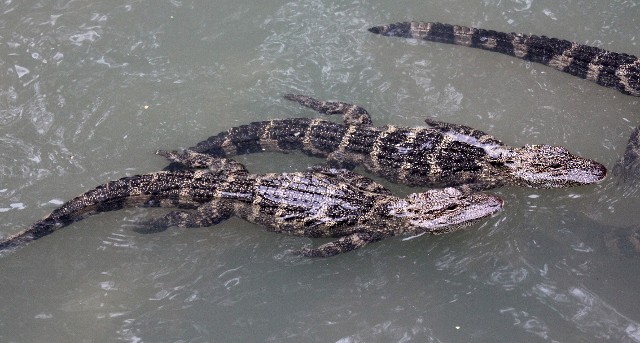
"Hungry Fish"
The center is actually quite large, covering many hectares, and with a little effort and a couple km walk, you can actually get some great looks at the species in semi-wild and natural conditions, which is far superior to the “main viewing area” where the tourists view thousands of the alligators in various stages of development. There are a few dozen or so that are located more remotely and are purported to be self-sustaining natural populations in their small but ample ponds and lakes. Well worth the trek beyond the main viewing area. And perhaps you may get a look at whatever deer species that made the tracks all over the area! My guess would be Sika Deer. The pine forests of the center provide great birding opportunities as well.
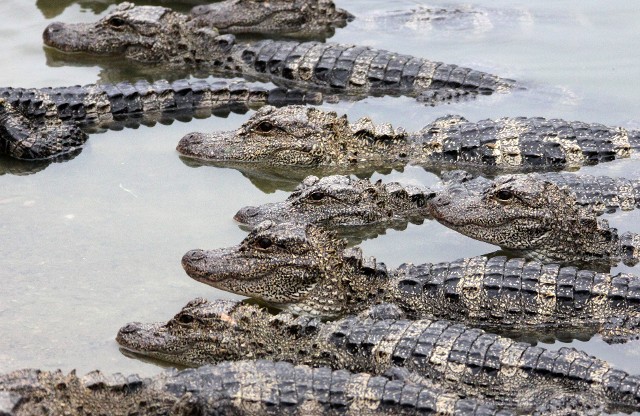
Alligator sinensis
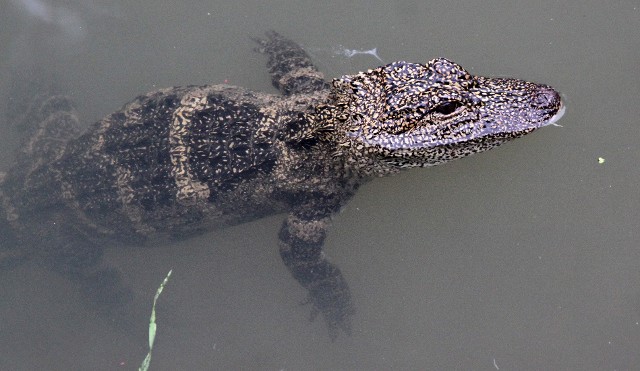
Cutie-pie
Wew! We’ve been traveling for the past five weekends in a row, and after finishing the literally flawlessly perfect trip to Anhui, and now cruising through the countryside of G15 on the way to Shanghai, looking south to Suzhou, I can’t help but daydream about our next adventure. I can’t wait!
****
Mammal List Anhui
- Tibetan Macaque (Macaca thibetana huangshanensis)*
- Perny’s Long-nosed Squirrel (Dremomys pernyi calidior)* (D. c. flavior seen in Yunnan)
- Red-hipped Squirrel (Dremomys pyrrhomerus)*
- Maritime Squirrel (Tamiops maritimus)
- Pallas’s Squirrel (Callosciurus erythaeus styani)*
- Yangtze Finless Porpoise (Neophocaena phocaenoides asiaorientalis)
****
Bird List Anhui
- Chinese Bamboo Partridge (Bambusicola thoracica thoracica)*
- Lesser Whistling Duck
- Chinese Goose
- Great Barbet (Megalaima virens)*
- Common Kingfisher
- Crested Kingfisher
- House Swift
- Oriental Turtle Dove
- Spotted Dove
- Common Moorhen
- Grey-headed Lapwing
- Intermediate Egret
- Brown Shrike
- Long-tailed Shrike
- Black-billed Magpie
- Eurasian Jay
- Red-billed Blue Magpie
- Grey Treepie
- Large-billed Crow
- Common Kestrel
- Grey-chinned Minivet (Pericrocatus solaris)*
- Blue Whistling Thrush (Myophonus caeleruleus)*
- Plumbeous Water Redstart
- White-crowned Forktail (Enicurus leschenaultia)*
- Red-billed Starling
- Crested Myna
- Coal Tit
- Great Tit
- Long-tailed Tit (Aegithalos caudatus)* check image
- Barn Swallow
- Brown-brested Bulbul
- Light-vented Bulbul
- Collared Finchbill (Spizixos semitorques)*
- Eastern Crowned Warbler (Phylloscopus coronatus)*
- Two-barred Warbler (Phylloscopus plumbeitarsus)*
- Masked Laughingthrush
- Rusty Laughingthrush (Garrulax poecilorhynchus)*
- Eurasian Tree Sparrow
- White Wagtail
- Slaty Bunting (Latoucheornis siemsseni)*
More Thibetan Macaques!
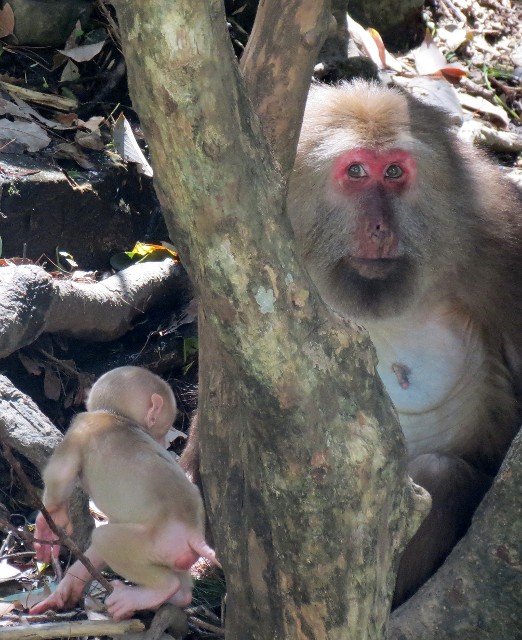
Cokie's really quite a good photographer these days!
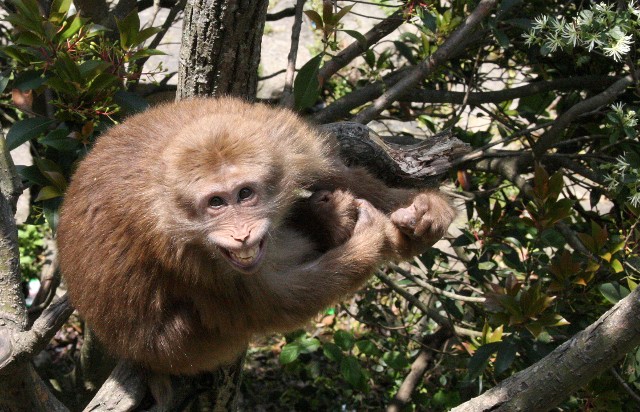
Sneaky little smile on this one...he was actually clanking his teeth in aggression...
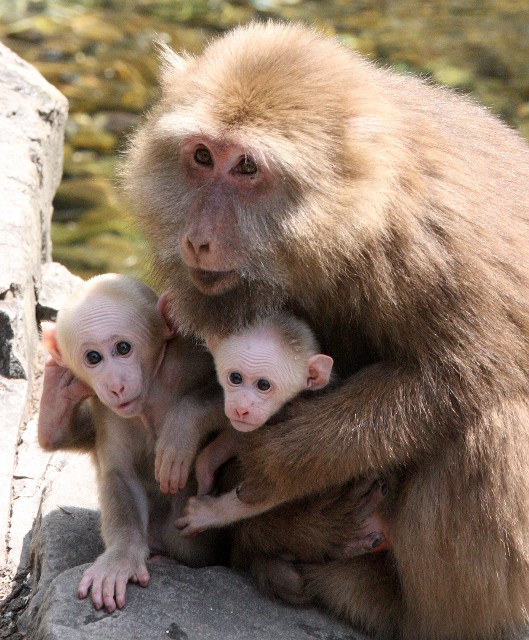
This mom was babysitting!

Seriously cute!
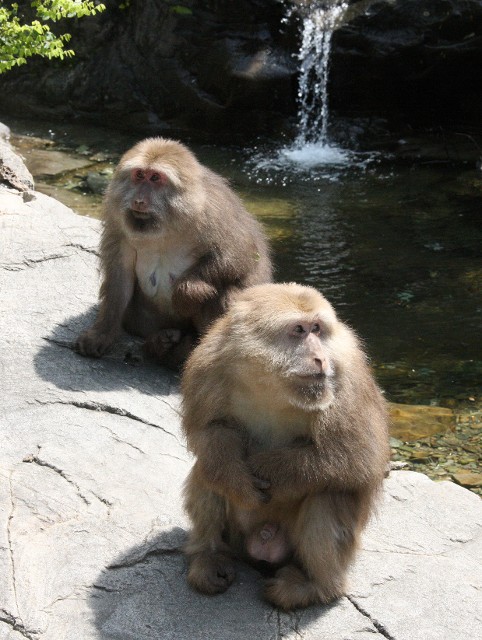
Macaca thibetana huangshanensis
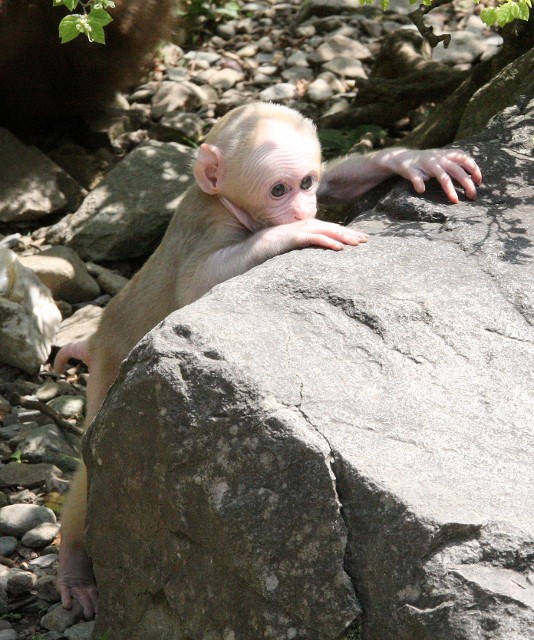
The little ones were only a few days old...so cute and curious.
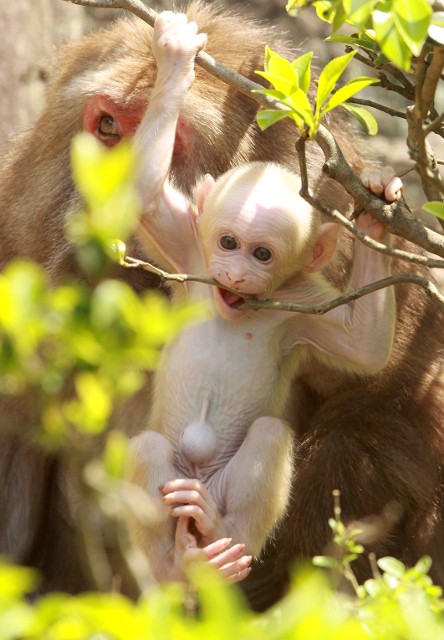
And playful!

Tasty twig...
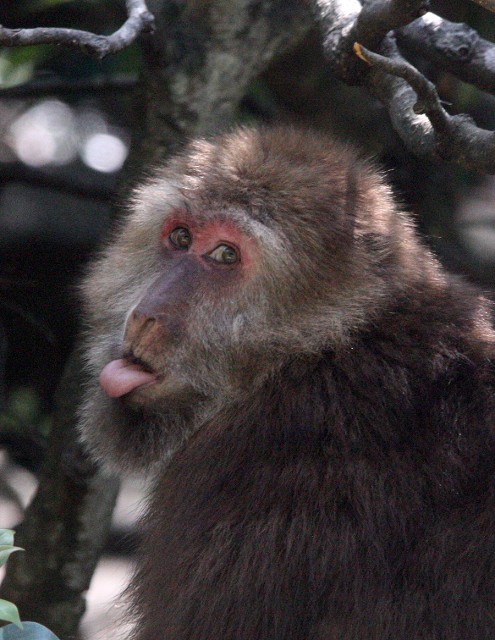
This one was very disrespectful!
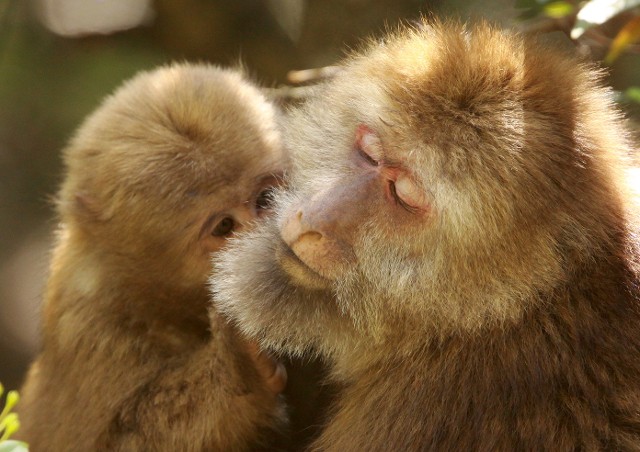
Grooming...
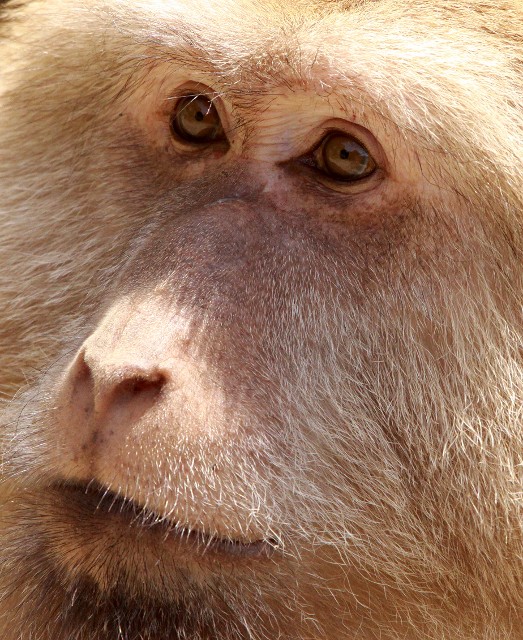
Thibetan Macaque
****
Other Critters
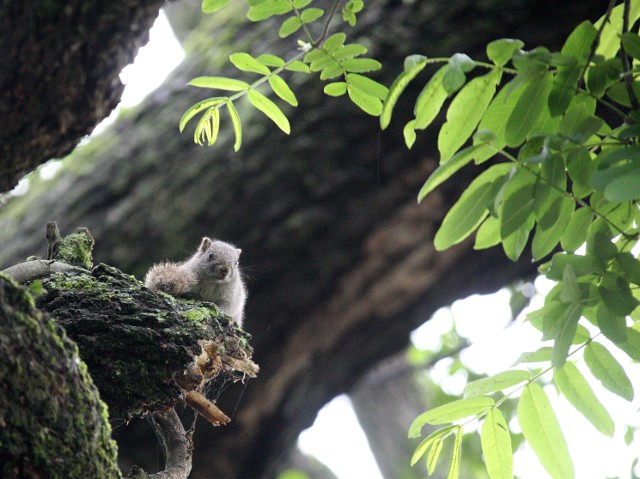
Anhui's subspecies of the Pallas's Squirrel...
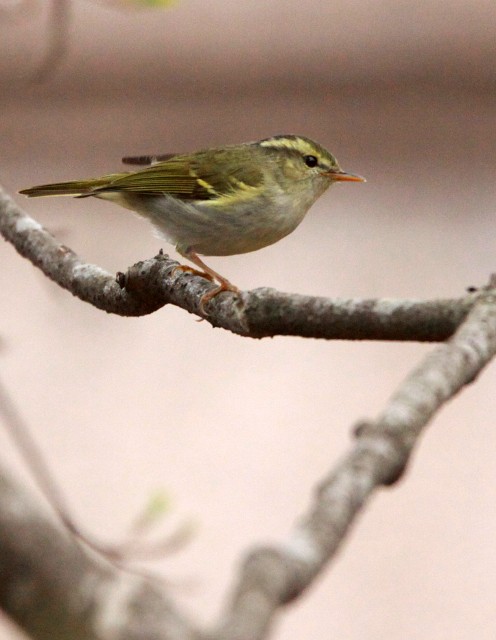
Two-barred Warbler (maybe?) seen in the forests of HuangShan Mountain...

One of the more depressing parts of our expedition to Anhui... Our main target (although I never really expected to see it...) was the very rare and elusive Black Muntjac, which is endemic to Anhui and Fujian Provinces. This poached leg of one was all we ever saw. This was in a noodle shop directly outside the main gate of HuangShan National Park. Poaching is still a significant problem all over China. Sad, very sad...
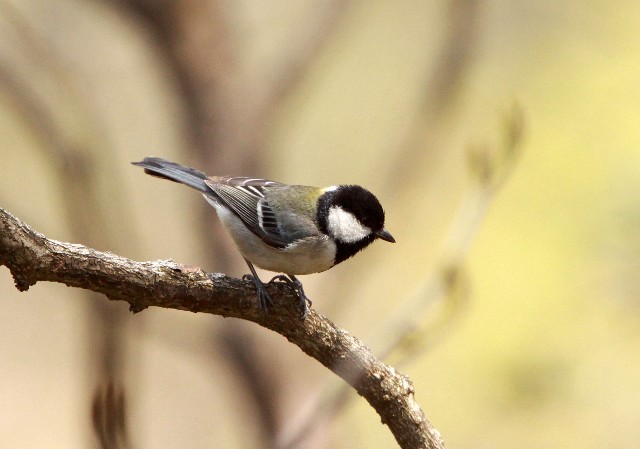
Great Tit seen in HuangShan...
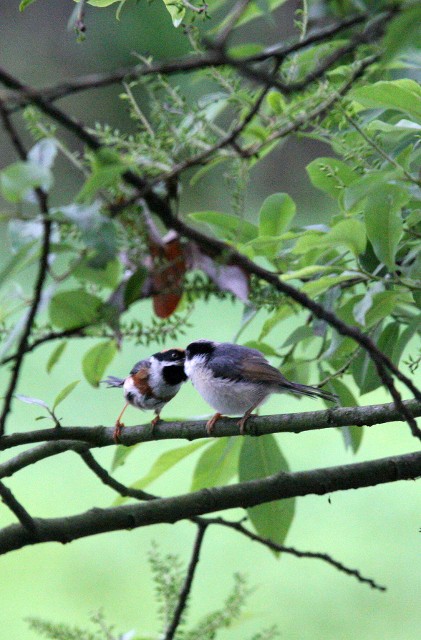
Black-throated Tit feeding his massive chick...
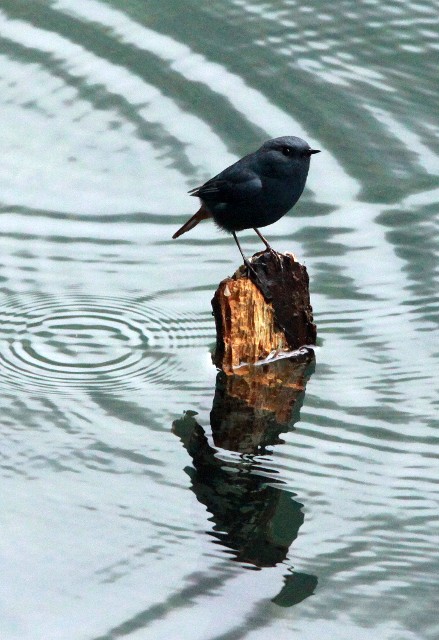
Plumbeous Water Redstart in Guniujiang Reserve

I loved this Grey-chinned Minivet I spent an afternoon with at Guniujiang Reserve
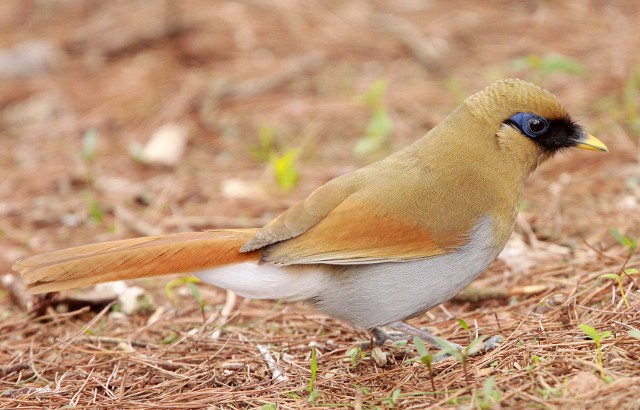
Rusty Laughingthrush at HuangShan National Park!
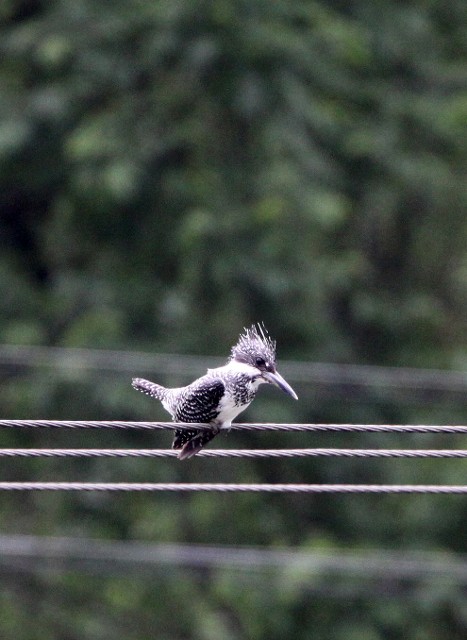
Crested Kingfisher seen near Guniujiang Nature Reserve...

Eurasian Jay at HuangShan
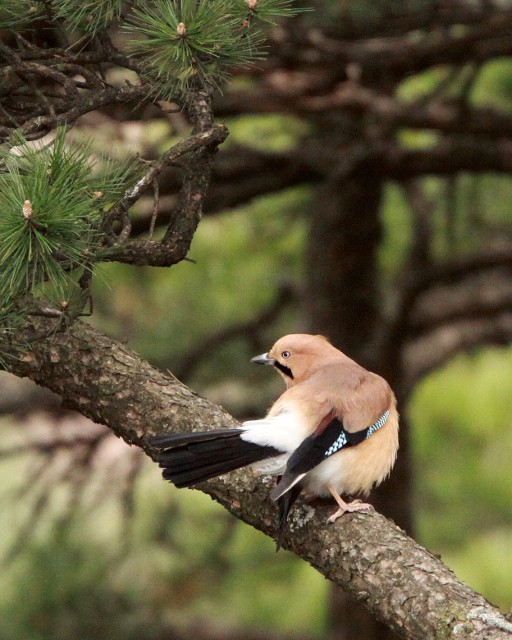
What a gorgeous bird - Eurasian Jay!
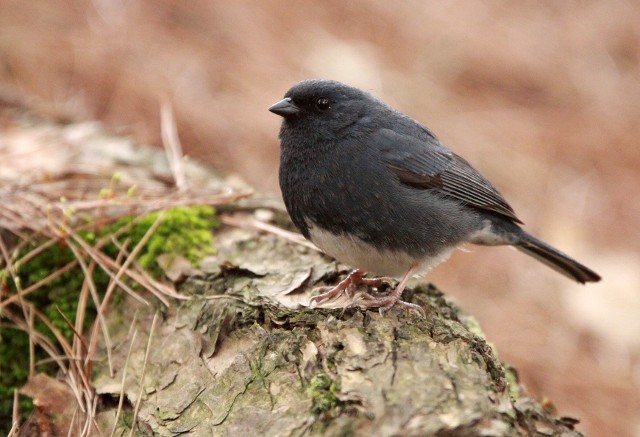
Slaty Bunting seen atop HuangShan
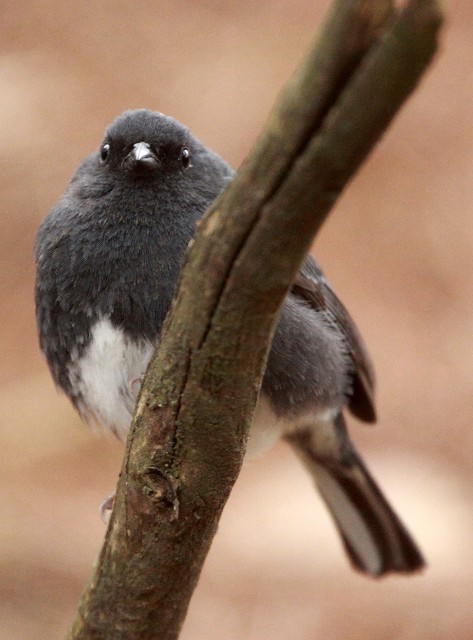
Slaty Bunting!
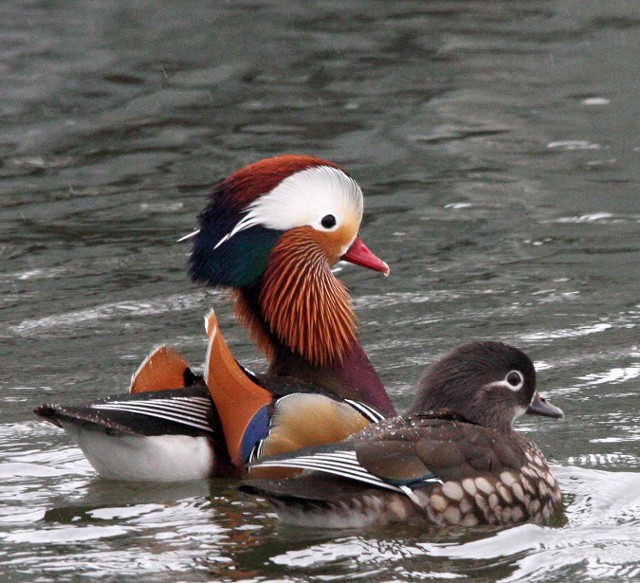
Mandarin Ducks are common throughout China.
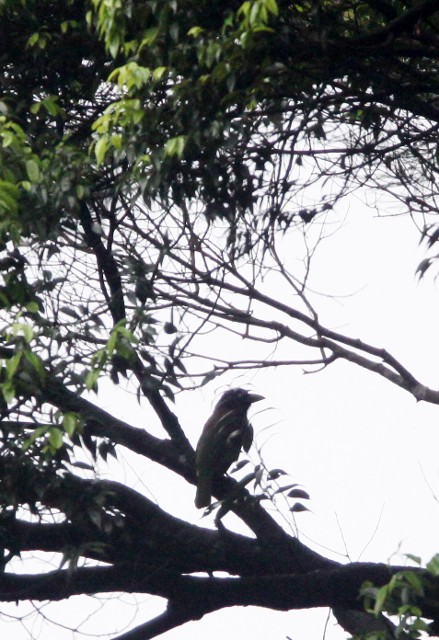
Horrible image for sure, but this was a magnificent bird. Initially I called it a "crow" and gave it no further thought. But then eagle-eye Som said, "That ain't no crow dude..." After a better second look, we finally realized we had a Great Barbet! This is the largest Barbet species anywhere!
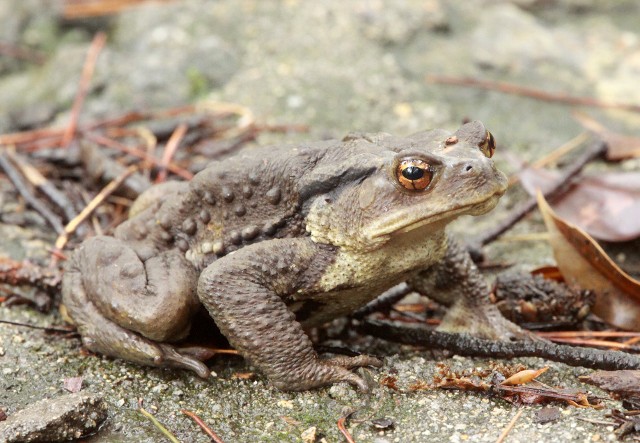
This was a suprisingly giant Asian Bufo that I came across one afternoon during a trek at Guniujiang...

We saw this little Scarabaeus species dung beetle carting off a nice macaque turd ball for its young to scarf while at Monkey Valley...
****
More Monkey Valley
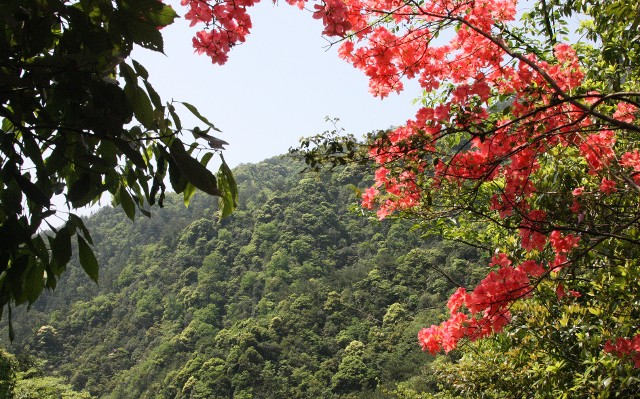
Colors in Monkey Valley, Fuxi Village
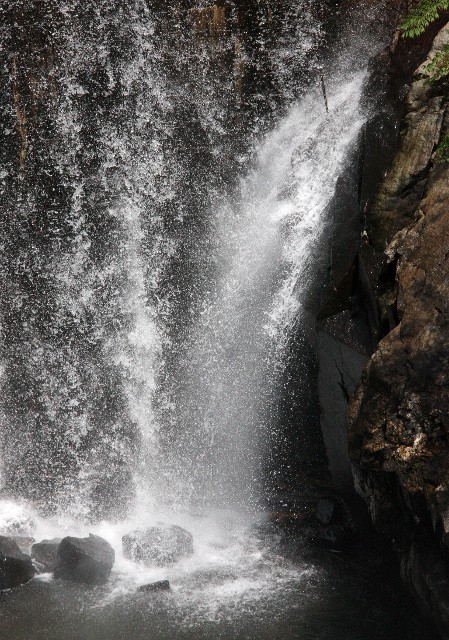
Fuxi Waterfalls

Rhododendron anhuiense & R. maculiferum...The forests around HuangShan were exploding with color.
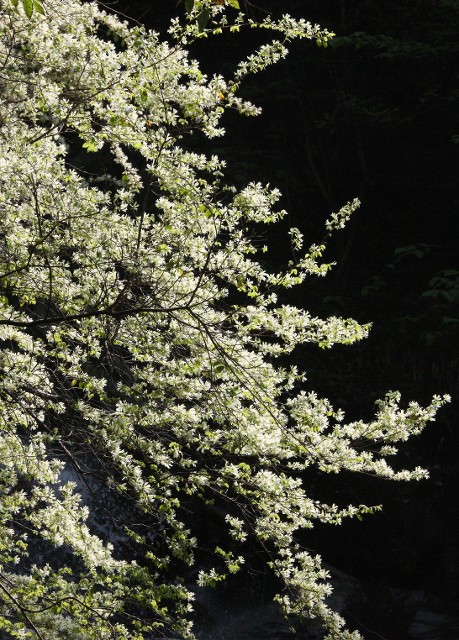
Witch Hazel (Loropetalum chinensis) was in bloom in many locations on this trip.
More HuangShan National Park!

Hence the name "Yellow" Mountain...
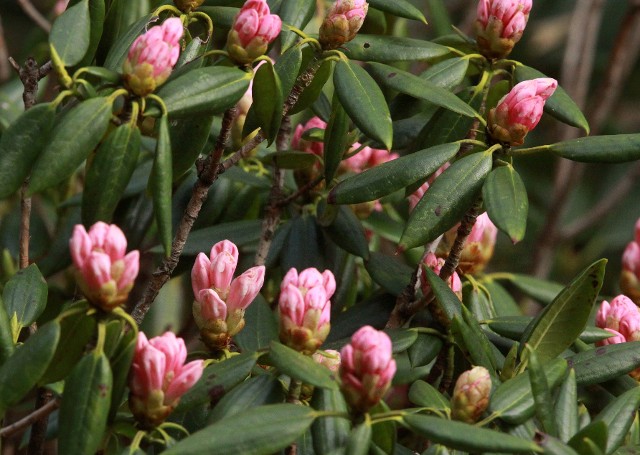
Rhododendron maculiferum near blooming on HuangShan Mountain...
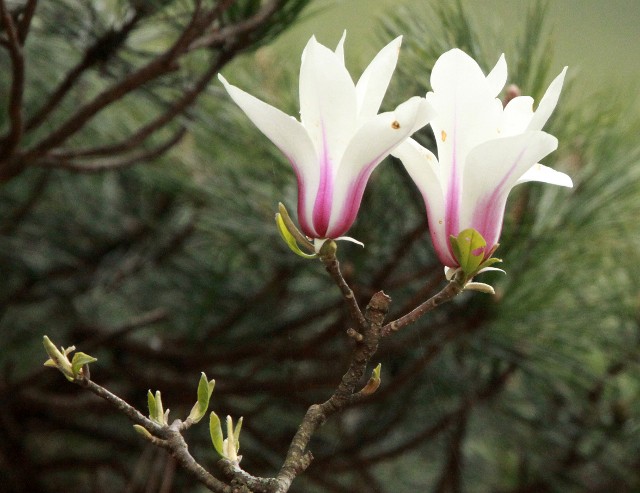
Magnolia cylindrica was in full bloom all over HuangShan this weekend!
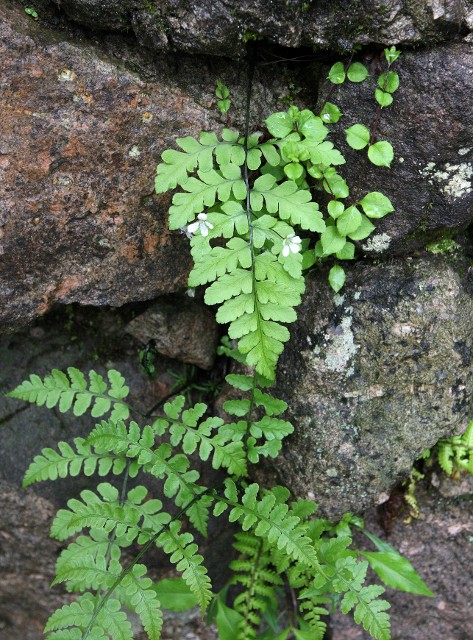
HuangShan has an extremely rich and diverse flora. The moist subtropical climate and dramatic elevational changes have created the conditions for extreme biodiversity and many endemics.
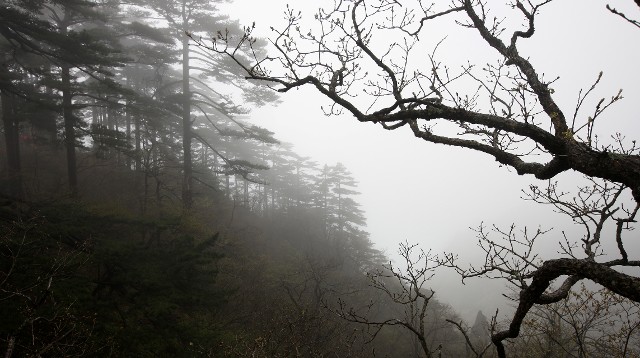
Our second day on the mountain was covered in fog...
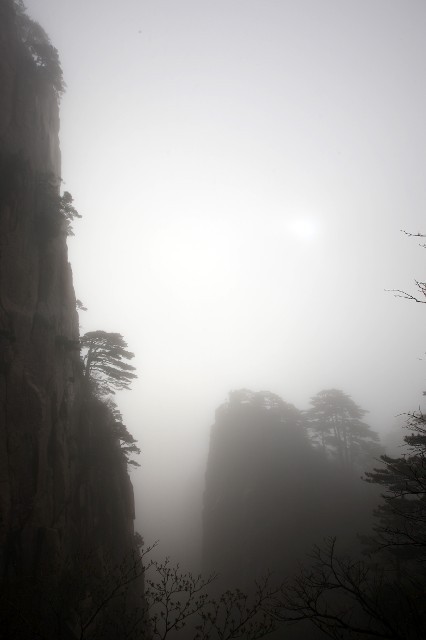
It's easy to see how James Cameron got the inspiration for the "Floating Mountains of Pandora" from HuangShan Mountain...
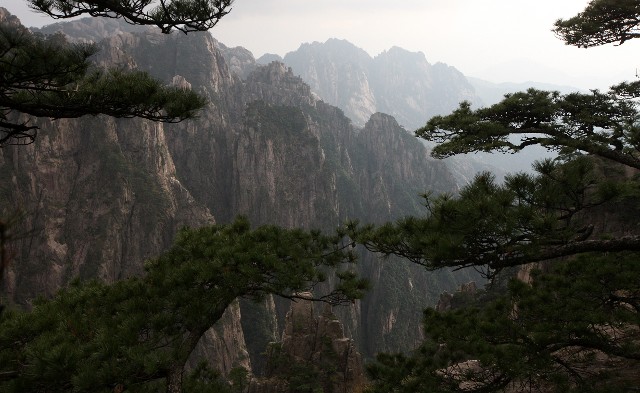
HuangShan Pine (Pinus hwangshanensis) framing the amazing geology of the region...
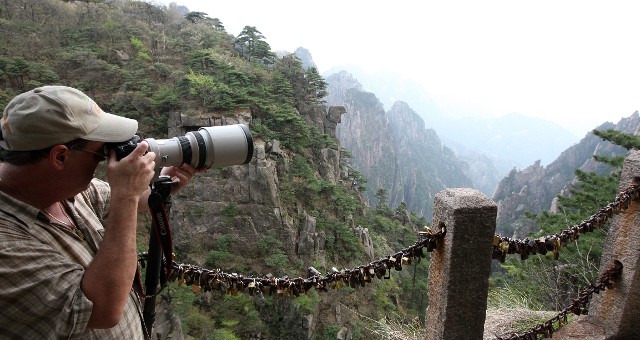
Excuse me sir, what are you shooting?

Pretty much everywhere we went, the big lens was a crowd starter....
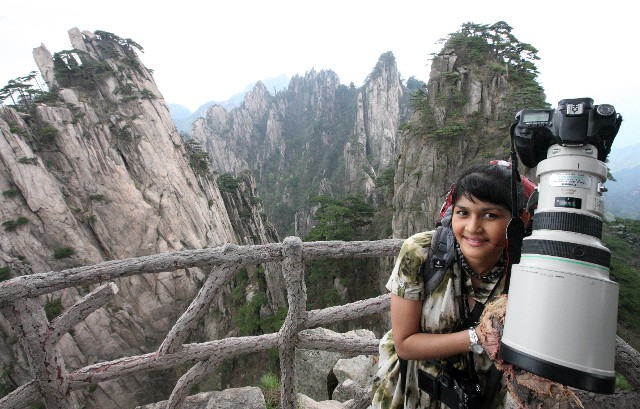
Seriously Som! That lens is bigger than you!
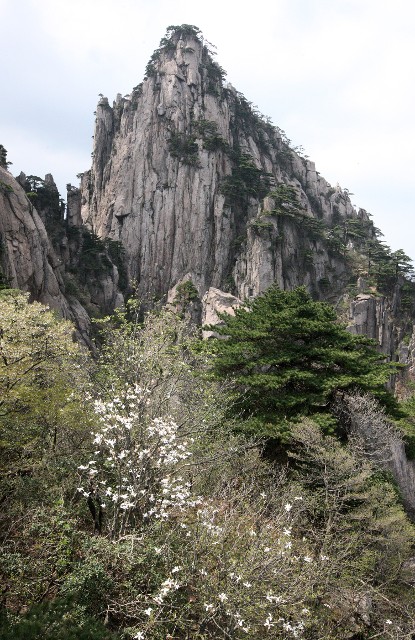
HuangShan National Park
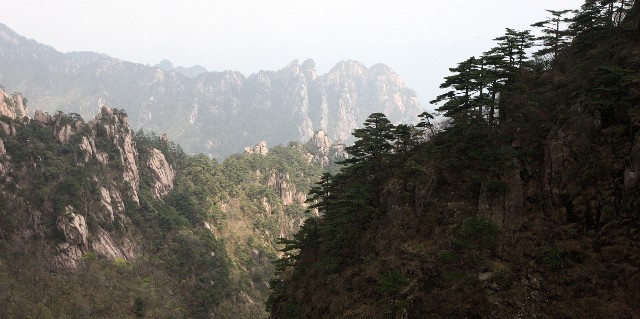
Wow...

Gingko biloba & Pseudotsuga gaussenii - two granddaddy giants lower down the mountain...
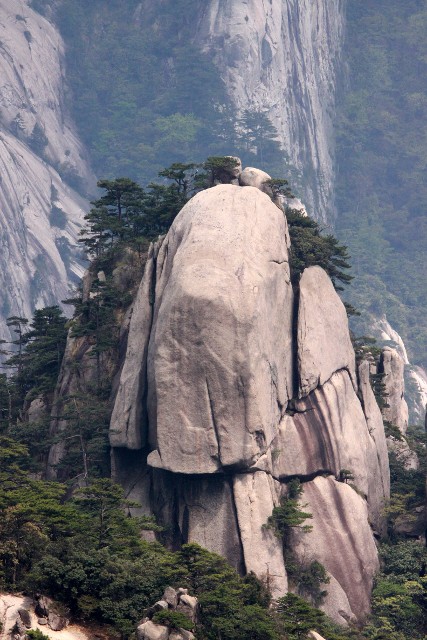
The geology of HuangShan is dominated by batholithic granitic outcroppings.
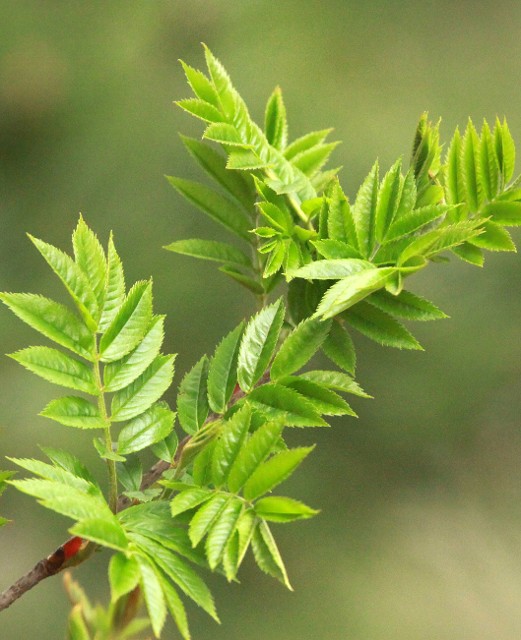
Sorbus amabilis are common on HuangShan...
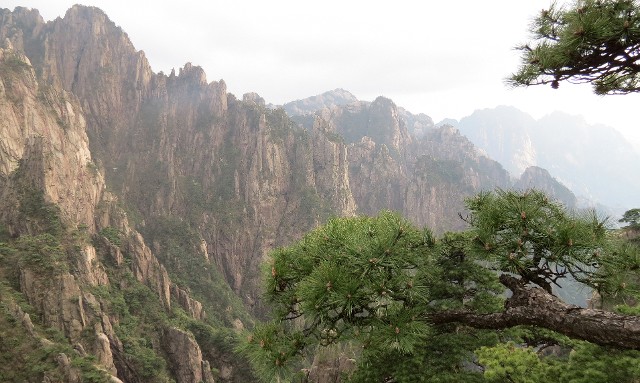
No way to take a bad image here...
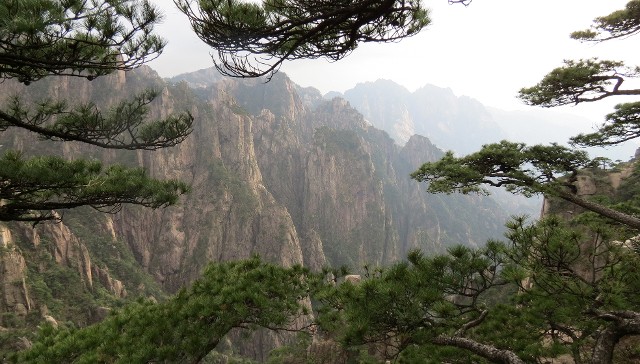
HuangShan

We will be back here for sure!
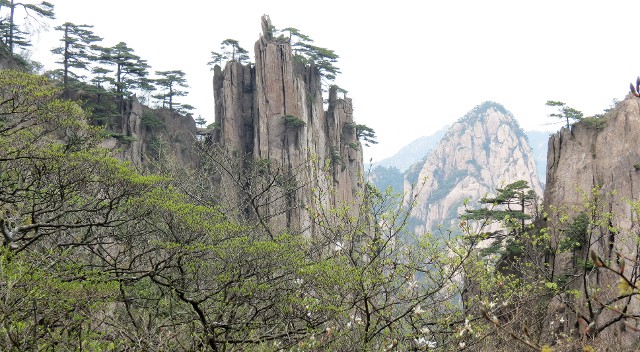
HuangShan

Amazing HuangShan! Who is that dweeb on the rock?

HuangShan's famous "lovers locks" located on virtually every available chain link fence...
More Guniujiang Nature Reserve
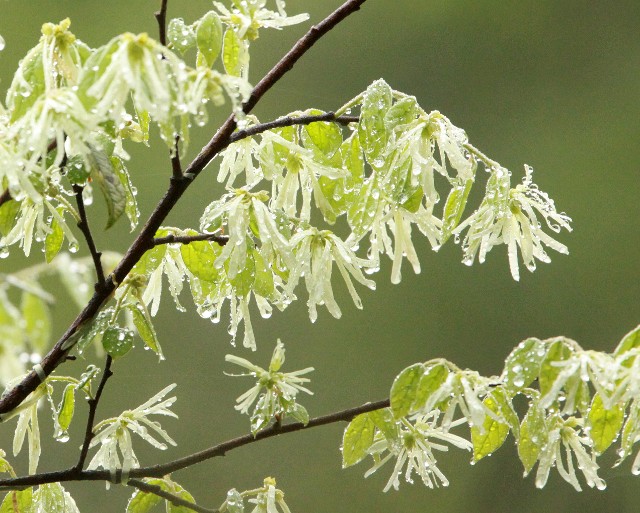
I would really like to ID this tree!
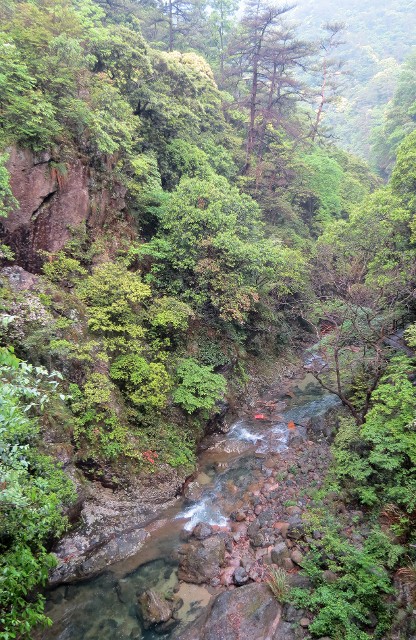
Guniujiang has many wild river canyons to explore...
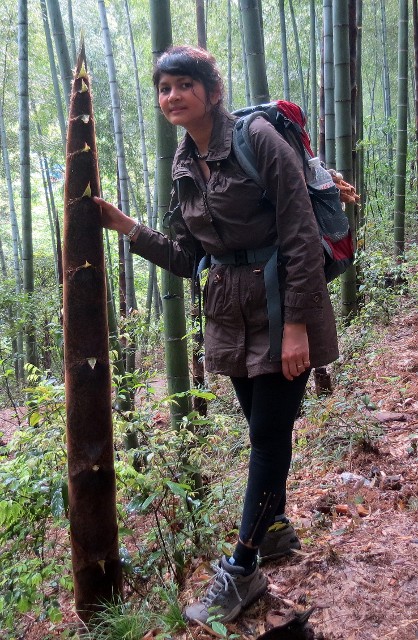
Guniujiang is home to substantial forests of Moso Bamboo (Phyllostachys edulis) which can grow OVER A METER in one day! This shoot is maybe only two days old!
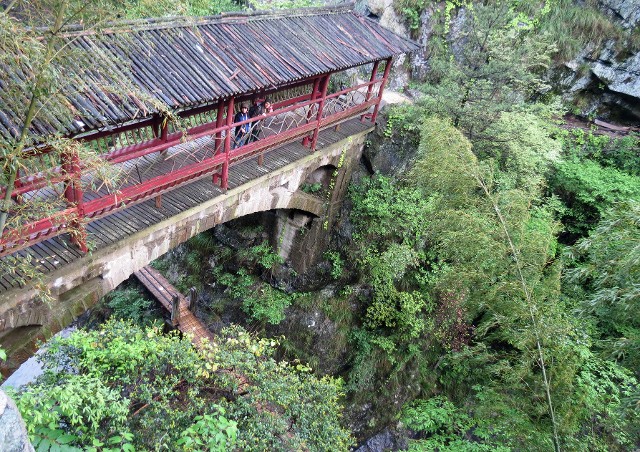
The ancient Hui-Hang Tea Trail travels through Guniujiang as well...
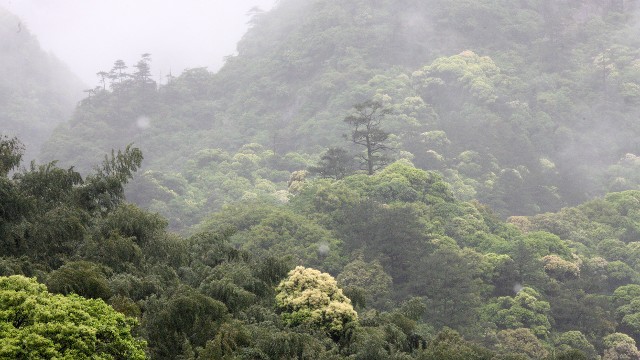
Guniujiang has an astounding forest ecosystem. No question this is a place I want to explore in much greater detail!
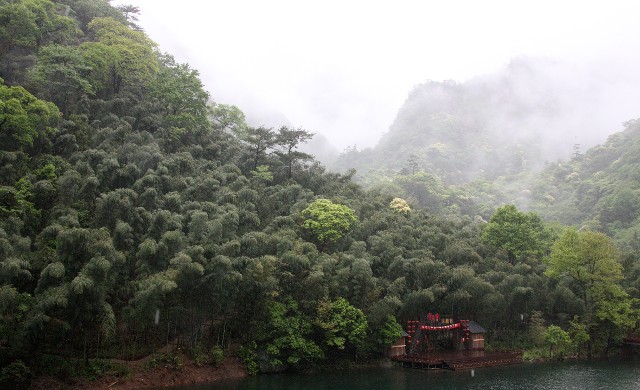
I got nervous when I saw the stage on the lake, however....Not sure what to expect when it got dark...
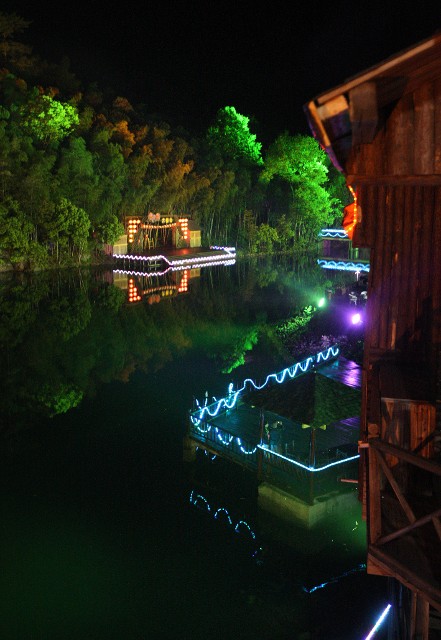
I guess the spectacular natural beauty of Guniujiang was not enough for the reserve's director. I guess they needed to improve the scenery with neon lights that flashed all night long....Only in China!
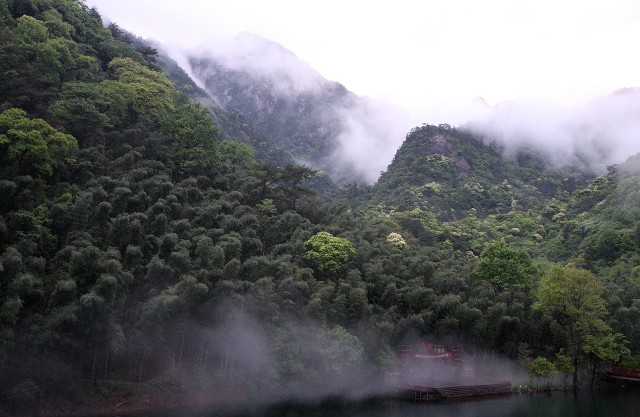
The funny thing is, the fog in the lower part of this picture is NOT real! The park has fog machines in the lower part of the forest to generate fog for the tourists....I guess that goes along with the neon lights above...
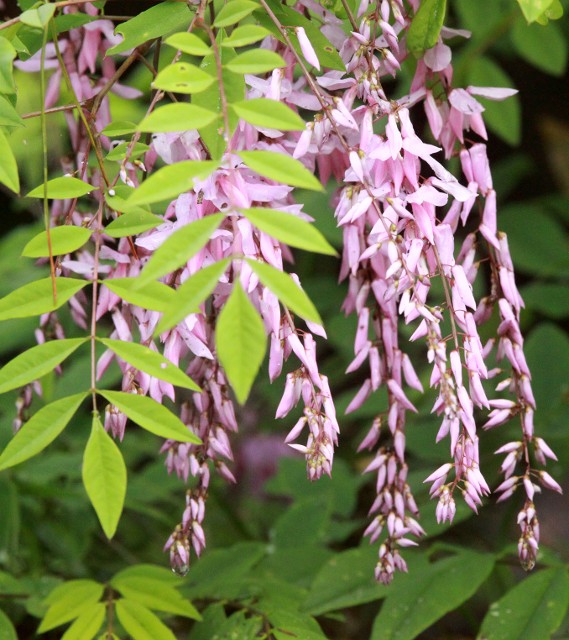
It was great to see wild and native Wisteria species in its natural habitat in Guniujiang.
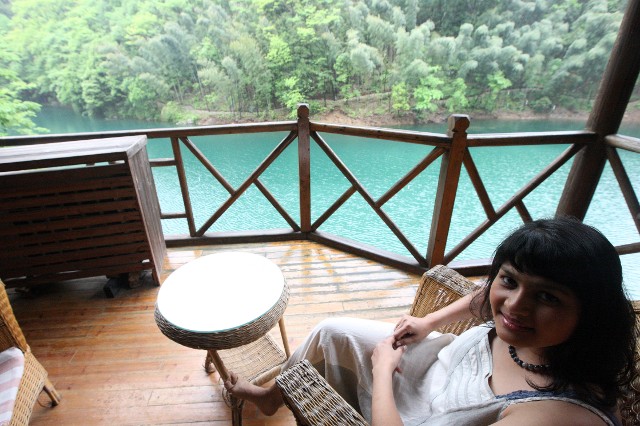
Guniujiang is a seriously nice place to relax and enjoy nature. We will return!
More Hongcun Village
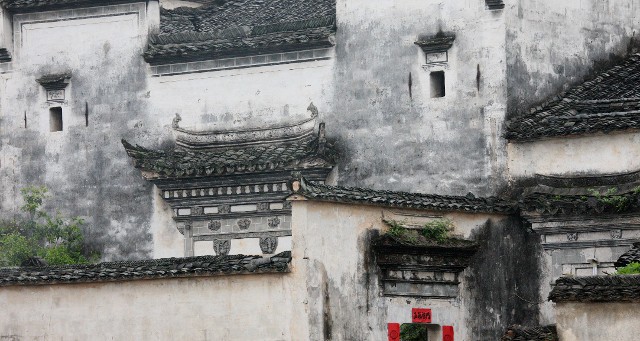
Great light this day.

Our Anhui-style local food restaurant in the heart of Hongcun. Yum!

So nice...
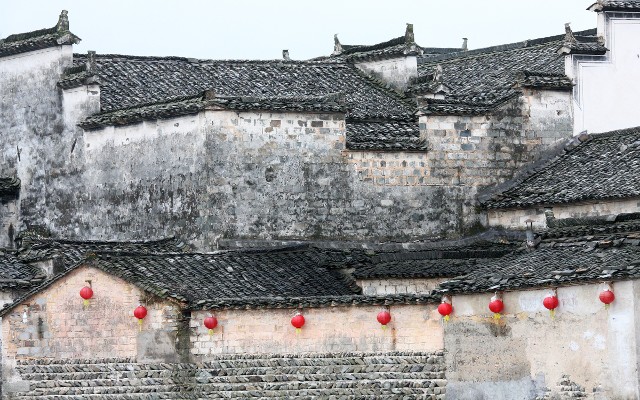
Southern Anhui is filled with villages just like this. Xidi and Hongcun seem to be the most famous and are now World Heritage Sites, but a simple drive through the countryside here is a treat filled with such places.
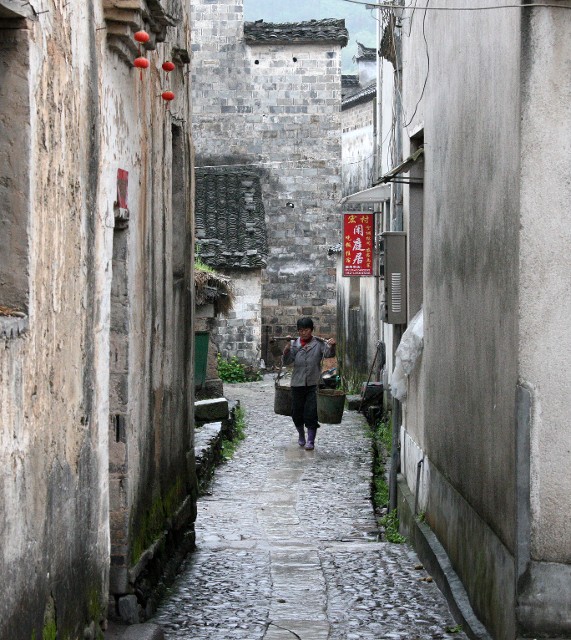
Village life somehow survives the tourism...

The fields of yellow Iris were beautiful and complimented the villages nicely...
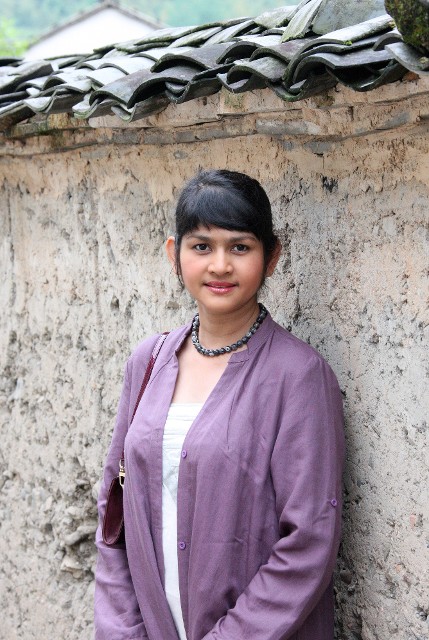
My little Iris...

Som made this young artist's day. Hongcun is filled with artists practicing their craft. Som fell in love with this yound lady's work and bought this sketch for 100 RMB. You should have seen her face light up!
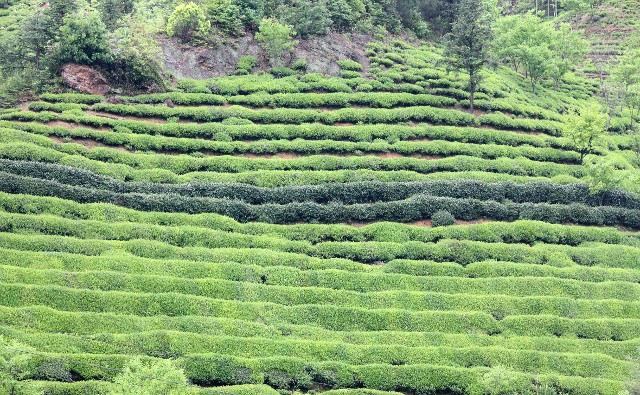
This region of Anhui is primarily tea plantations and the terraces are spectacular.

Anhui Noodle chef extraordinaire!
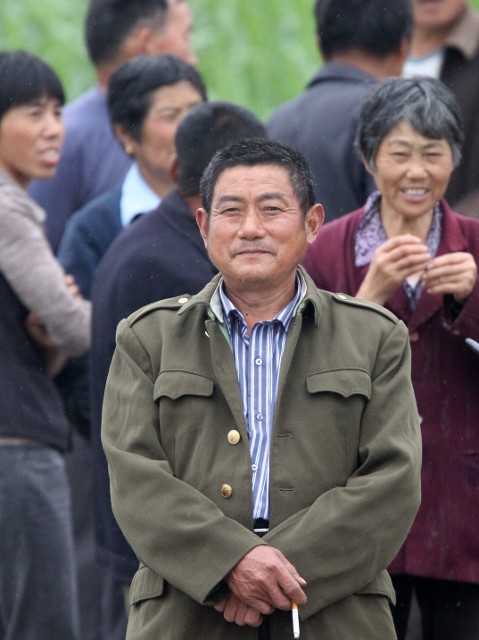
A new friend from Gatong Town near Tongling...
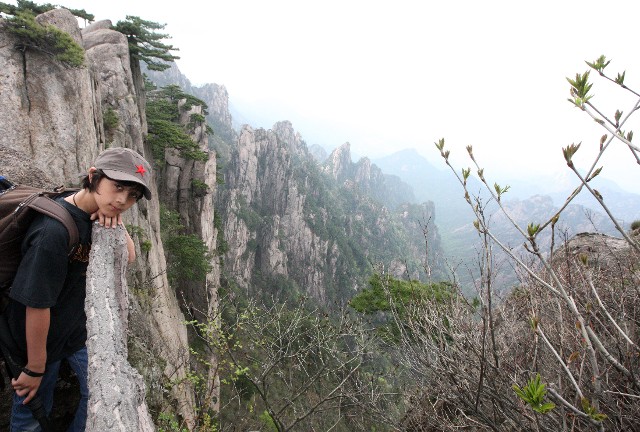
Not too close to the edge little dude!

Macaca cokieensis...
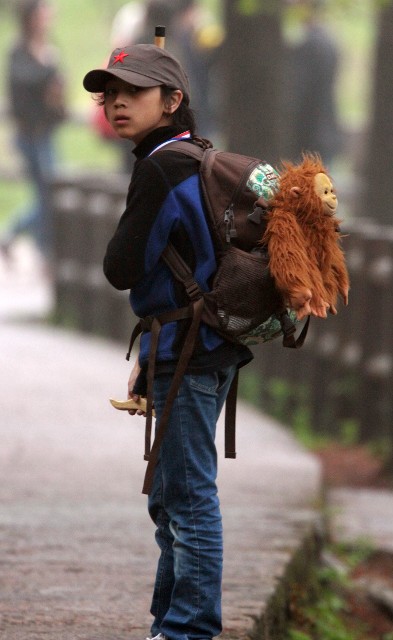
My little macaque and his best buddy, Toby...
Click Here For More Images From Our Pbase Galleries!
